- Joined
- Sep 11, 2019
- Messages
- 78
- Points
- 18
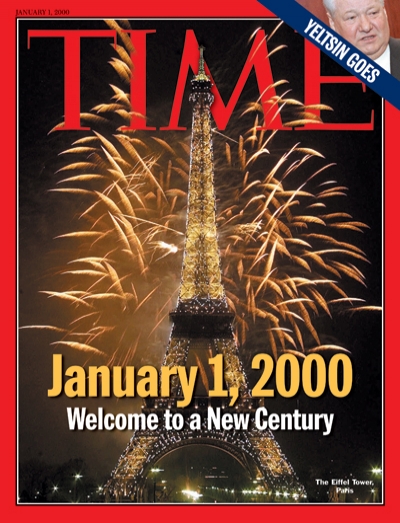
As the world moved into the new millennium, many looked to the future with a positive, upbeat attitude. The Y2K Bug didn’t crash the world like some feared, and as the ball dropped in New York, many were looking forward to the future. For many Americans, the decade between the end of the Cold War and 9/11 was one of peace and prosperity – the economy was booming, unemployment was at record lows, and technological advances only seemed to come faster and bigger with each year, from cellular phones to the world wide web. Beneath it however, struggles against racism remained alongside other issues including homophobia, domestic terrorism, and the looming dot-com bubble. However, to the majority, these issues were largely unimportant and ignored by most. So pop your collar, slap on Destiny Child’s “Say My Name”, and join the party! It’s 2000, baby!
- Important Recent and Ongoing Events
- Berlin Wall Falls (1989)
- Gulf War (1990 - 1991)
- Rodney King beaten by Police (1991)
- Killing of Latasha Harlins by store owner Soon Ja Du (1991)
- USSR Collapses, Cold War ends (1991)
- Iraq Disarmament Crisis (1992 - )
- Los Angeles Riots (1992)
- Bill Clinton elected President of the United States, beating incumbent George H.W. Bush (1992)
- UNOSOM II (US Mission into Somalia) (1993 - 1994)
- Bosnian War (1992 - 1995)
- 1993 World Trade Center Bombing
- Waco Siege (1993)
- Nelson Mandela Freed and elected President of South Africa (1994)
- Rwandan Genocide (1994)
- Assault Weapons Ban of 1994 (1994 - )
- Dot-Com Bubble (1995 - 2000)
- US Presidential Election Race(George W. Bush and Al Gore) (2000)
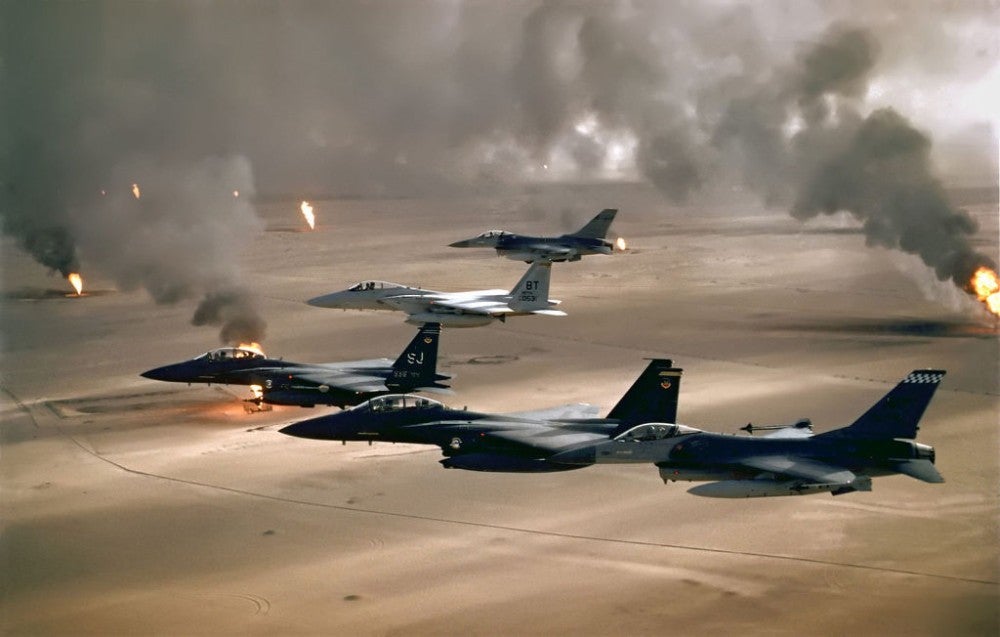
- 1995
- Jan 1, 1995 - Smoking banned in all enclosed workplaces in California (bars added in 1998)
- Feb 13, 1995 - 21 Bosnian Serbs are charged with genocide and crimes against humanity by the UN International Criminal Tribunal
- Mar 20, 1995 - Members of doomsday cult Aum Shinrikyo carry out the Tokyo subway sarin attack, killing 14 people and injuring over a thousand.
- Apr 19, 1995 - Oklahoma City Bombings kill 168 people
- May 7, 1995 - Jacques Chirac is elected president of France
- Aug 24, 1995 - Microsoft releases Windows 95
- Aug 30, 1995 - NATO bombing campaign against Bosnian Serb artillery positions begin and extends into September
- Sept 19, 1995 - The Washington Post and New York Times publish the Unabomber’s Manifesto
- Oct 1, 1995 - 10 people convicted in 1993 World Trade Center bombing
- Oct 3, 1995 - O.J. Simpson found not guilty
- Oct 16, 1995 - Million Man March takes place in DC with over 800k black men and some women taking part to voice urban and minority issues to politicians
- Dec 14, 1995 - The Bosnian War ends with the Dayton Agreement
- 1995 - Global Positioning System (GPS) becomes fully operational.
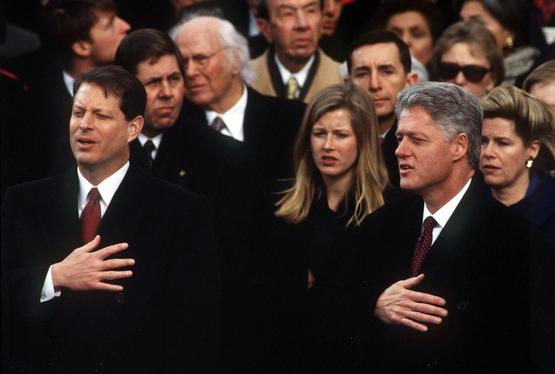
- 1996
- Jan, 1996 - Blizzard of ‘96 hits, killing more than 150 people and shutting down cities and towns across the US East Coast
- Jan 19, 1996 - North Cape oil spill occurs off Rhode Island, leaking 820,000 gallons of oil.
- Feb 17, 1996 - Garry Kasparov beats “Deep Blue” in chess match
- April 3, 1996 - Ted Kaczynski, the Unabomber, is arrested
- April 28, 1996 - Port Arthur Massacre occurs in Australia, leaving 35 dead
- June, 1996 - The Iraq disarmament crisis builds increasing tension between the US and Iraq as the Middle East nation refuses inspectors access to a number of sites.
- June 15, 1996 - an IRA bomb explodes in Manchester, England, injuring over 200 people and damaging large parts of the city center.
- July 5, 1996 - Dolly the Sheep, the first successfully cloned mammal, is born in Scotland
- July 19, 1996 - The 1996 Summer Olympics in Atlanta, Georgia begin. They end on August 4th
- July 27, 1996 - Centennial Olympic Park Bombing in the 1996 Summer Olympics kills 1 and injures 111 people
- Aug 9, 1996 - Boris Yeltsin is sworn in for second term as President of Russia
- Sept 29, 1996 - The Nintendo 64 releases in North America
- Oct 7, 1996 - Fox News Channel launches on US Cable networks
- November 5, 1996 - Bill Clinton wins reelection.
- 1996 - Construction starts on the International Space Station
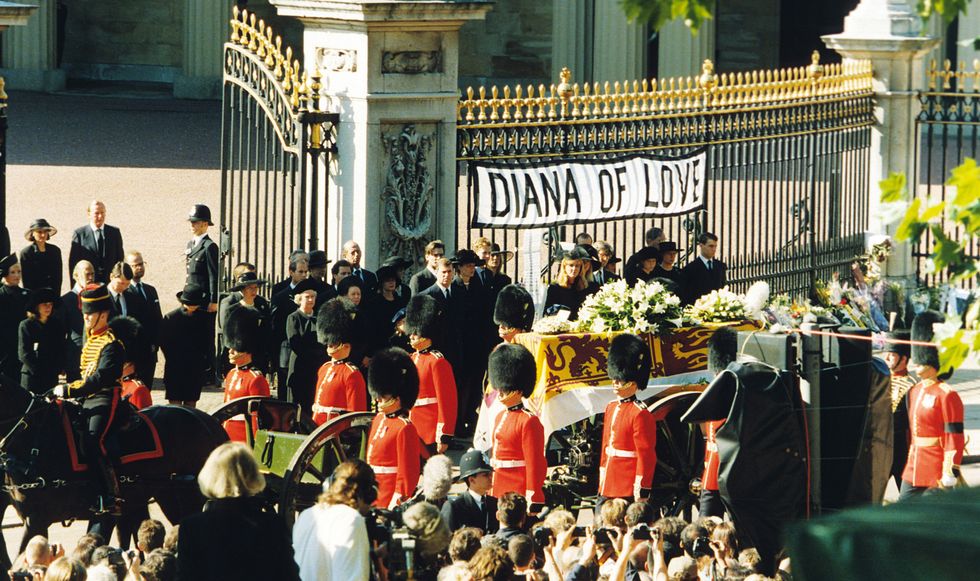
- 1997
- Feb 28, 1997 - North Hollywood Shootout occurs, involving two heavily armed bank robbers and numerous LAPD officers
- Mar 22, 1997 - The Comet Hale-Bopp makes its closest approach to Earth
- Mar 26th, 1997 - In San Diego, California the Heaven’s Gate cult commit mass suicide at their compound in response to Hale-Bopp
- May, 1997 - Unemployment across the US falls below 5%
- May 1, 1997 - Tony Blair becomes Prime Minister of the United Kingdom
- May 10, 1997 - IBM’s “Deep Blue” defeats Garry Kasparov, marking the first time a computer defeated a Chess World Champion
- July 1, 1997 - The UK hands sovereignty of Hong Kong over to China
- July 4, 1997 - NASA’s Pathfinder probe lands on Mars
- Aug 6, 1997 - Microsoft buys 150mil share in Apple
- Aug 6, 1997 - Korean Air Flight 801 crashes in Guam, killing 229
- Aug 31, 1997 - Princess Diana is taken to a hospital after a car accident and is pronounced dead at 4 AM
- Sep 6, 1997 - The funeral of Diana, Princess of Wales takes place at Westminster Abbey and is watched by over two billion people worldwide
- Sep 15, 1997 - www.google.com is registered
- Oct 15, 1997 - NASA launches the Cassini-Huygens probe to Saturn
- Dec 19, 1997 - James Cameron’s Titanic premiers – it goes on to become the highest grossing film of all time.
- 1998
- Jan 14, 1998 - Paula Jones accuses President Bill Clinton of sexual harassment.
- Jan 26, 1998 - Bill Clinton denies he had ‘sexual relations’ with Monica Lewinsky
- Feb 7, 1998 - 1998 Winter Olympics held in Nagano Japan thru the 22nd
- April 10, 1998 - Good Friday Agreement signed between the Irish, British, and North Ireland political party, signaling for the most part the end of the Troubles in Ireland
- May 18, 1998 - US v. Microsoft, the DOJ and 20 states file an antitrust case against Microsoft over the monopoly on the PC.
- June 25, 1998 - Microsoft releases Windows 98
- July 28, 1998 - Monica Lewinsky receives immunity in exchange for testimony on relationship with President Bill Clinton
- Aug 7, 1998 - US Embassies in Tanzania and Kenya are bombed, killing 224 people and injuring more than 4,500.
- Aug 17, 1998 - President Bill Clinton admits to having an ‘improper physical relationship’ with Monica Lewinsky and that he misled the public.
- Oct 6, 1998 - College student Matthew Shepard found tied to a fence, and died on Oct 12th, becoming a symbol for gay-bashing and sparking controversy and discussion of homophobia in the US.
- Nov 19, 1998 - Impeachment hearings begin against President Bill Clinton
- Nov 25, 1998 - Jack Kevorkian, a strong proponent for assisted and voluntary euthanasia is charged with second-degree murder after airing a video tape depicting the voluntary euthanasia of Thomas Youk, sparking a divisive debate in the country on assisted suicide.
- Dec 19, 1998 - President Bill Clinton impeached by the House of Representatives, though later acquitted.
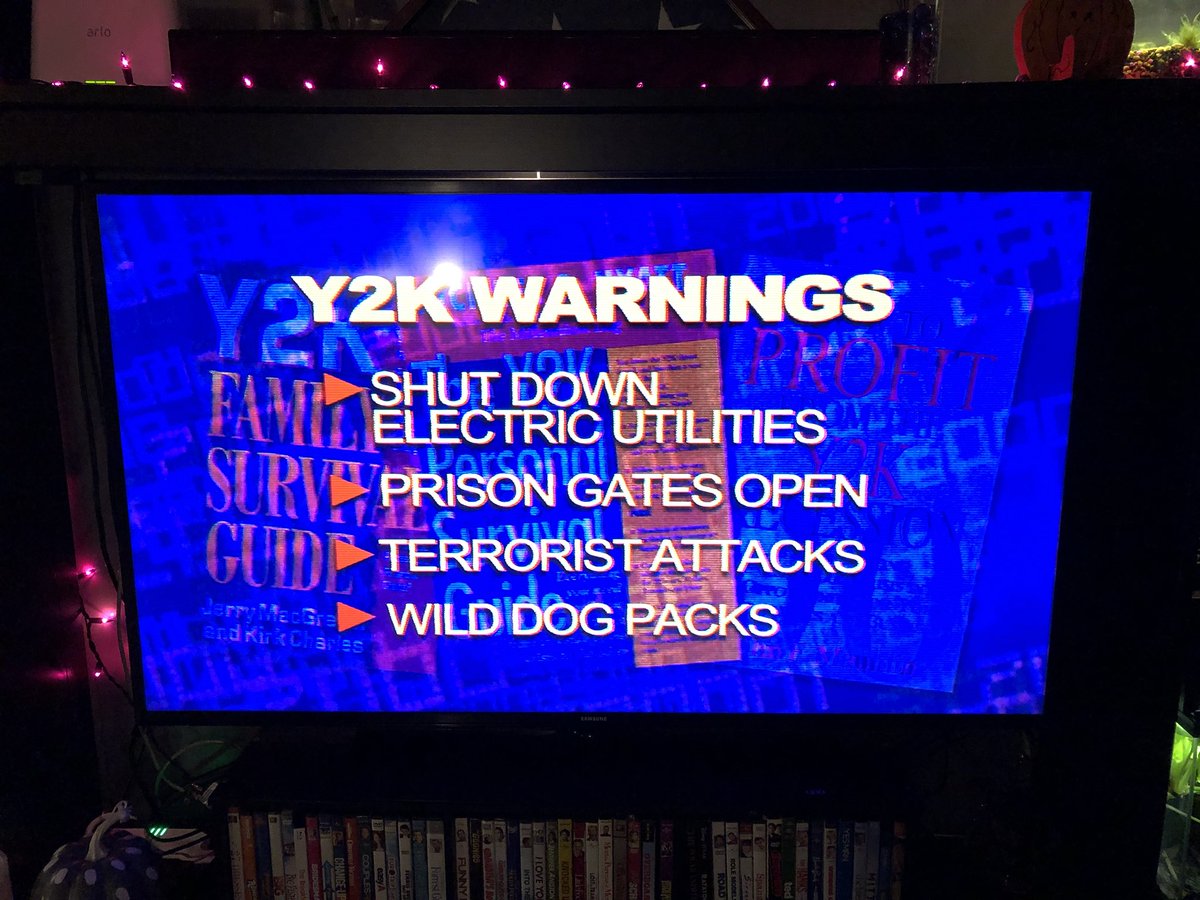
- 1999
- Y2K/Millenium Bug - In the leadup to the new millennium, many worried that computers and programs worldwide would be unable to handle the switch from a two to four digit year configuration, with potentially disastrous consequences. Throughout the year, governments and tech companies across the globe released patches and solved the supposed issue. Some took the hysteria seriously and began hoarding supplies – however when 2000 rolled around, only a few bugs occurred.
- Mar 8, 1999 - Supreme Court upholds the murder convictions of Timothy McVeigh in the Oklahoma City bombing
- Apr 20, 1999 - Eric Harris and Dylan Klebold kill 12 students and a teacher, then themselves in the Columbine High School massacre, sparking debates on bullying, gun control, and violence in the media
- May 29, 1999 - Space Shuttle Discovery completes first docking with the International Space Station
- June 1, 1999 - Napster releases. A peer-to-peer sharing application, it allowed users to share files, mainly .mp3s and songs, with one another.
- July 16, 1999 - JFK Jr crashes his plane, killing him, his wife, and her sister.
- July 22, 1999 - The first version of MSN Messenger is released
- Nov 30, 1999 - ExxonMobil Merger completed, forming the largest corporation in the world
- Dec 31, 1999 - The US overturns administration of the Panama Canal to the Panamanian government.
- Dec 31, 1999 - Boris Yeltsin resigns as President of Russia, leaving Prime Minister Vladimir Putin as acting President
- 2000
- Jan 10, 2000 - America online announced an agreement to purchase Time Warner for $162 billion, the largest ever corporate merger.
- Jan 13, 2000 - Bill Gates steps down as CEO of Microsoft, replaced by Steve Ballmer.
- Jan 14, 2000 - Dow Jones closes at 11,722.98, the peak of the Dot Com Bubble
- March 7, 2000 - George W. Bush and Al Gore emerge victorious in their respective caucuses and primaries
- March 10, 2000 - NASDAQ reaches all time high of 5,048.
- March 13, 2000 - Japan announces a new recession – over the next few months stocks will fall across the globe, especially with new internet startups, leading to the Dot-Com Bubble bursting, with the US recession lasting into the fall.
- April 3, 2000 - US v. Microsoft, Microsoft ruled to have violated antitrust laws
- April 14, 2000 - Dot-Com Company stocks fall rapidly across the board
- May 5, 2000 - ILOVEYOU/Love Bug Computer virus spreads across the glove, infecting an estimated 10% of internet connected computers over the next ten days and dealing billions in damages worldwide

Society in the 1990s: American society in the nineties was filled with extremes and contradictions. Americans built bigger and more elaborate homes and drove more expensive automobiles, then worked longer hours to pay for them. They spent more, borrowed more, and went more deeply into debt. Growth and cultural shifts amongst the populace came about in innumerable places. The 90s were characterized with a rise of multiculturalism and alternative media, continuing into the 2000s.
Major events around the world greatly affected the American public and its perception during the decade. With the end of the Cold War in 1991, and American prestige upheld following victory in the Gulf War, it was a decade of prosperity at home. Before leaving office, H.W. Bush authorized an intervention into Somalia following the outbreak of civil war. What began as a humanitarian operation shifted into a military conflict, culminating in the infamous Battle of Mogadishu, which would see the withdrawal of US forces in 1993.
Because of this, President Clinton refused to send American troops to stop the Rwandan Genocide in 1994. Realizing that he could’ve prevented this, Clinton, heading NATO forces, sent American fighters and bombers in 1995 to stop the killings of Bosnian Muslims at the hands of the Bosnian Serbs, leading to the end of the Bosnian War.
In spite of this success in foreign policy, problems between Republicans and Democrats grew during the Clinton administration. For many, bipartisanship was something of the past as both sides stamped their heels further into the ground; the government shut down twice in late 1995 and early 1996 over funding for public health reform and the environment, with many blaming the Republicans refusal to back down on their suggested budget cuts. These political issues would continue throughout Clinton’s presidency, culminating in the spectacle that was the Monica Lewinsky Scandal and Clinton’s near impeachment, all followed by the public on national television.
Movements such as grunge, the rave scene, and hip hop spread around the world, aided by advances in tech like cable tv and the World Wide Web. Vestigial changes from the counterculture revolution of the 1960s and ‘70s were also apparent. More casual ‘laid-back’ attitudes towards dress, language, and sexual freedom were among these. Western fashions reflected this by turning to highly individualistic and/or counter-cultural styles, influenced by Generation X and Millennials; tattoos and body piercings gained popularity and retro styles of fashion became prevalent once more. Young people became increasingly involved in extreme sports and outdoor activities that embraced athletics and an appreciation for nature.
Society saw an increasing tolerance of sex and sexual imagery, with most accepting premarital intercourse. Drug use remained, with marijuana and crack cocaine becoming increasingly popular amongst various communities.
Race relations looked to improve at the start of the decade, with many Blacks and Hispanics elected to various positions in local, state, and federal government. Despite this step forward, deeper tensions lay beneath the cracks of society that would pull progress two steps back. Between poverty, inequality, and police injustice, Black communities across the country were tired and fed up. Riots erupted in 1991 in Los Angeles and Brooklyn over the deaths of young blacks and the acquittal of police officers following the beating of Rodney King. Ultimately it was the highly publicized O.J. Simpson trial and the Million Man March that would bring these tensions up to the surface, offering a bridge for many Americans to learn about these racial injustices and the opportunity to regard and respect African Americans and heal the racial breach. Though this wouldn’t solve inequality, and issues would continually arise, it was a step in the right direction for American society.
Feminism and LGBT acceptance began to grow during the decade alongside the rise of queer theory and discussions of gender and sexuality, though it still faced many detractors. The World Health Organization removed homosexuality from its list of diseases in 1990 while television shows like The Real World, My So Called Life, and Ellen helped shine a spotlight on the LGBT community and increase acceptance by humanizing them and their struggles. According to a 1998 Time/CNN poll, 64% percent believed homosexual relations were acceptable whilst 36% believed they were morally wrong, signifying this shift.
At the same time, the rise of the ‘moral majority’ continued, spurred on by perceptions that society was falling out of control. The Moral Majority were a faction of the Republican Party whose policies included conservatism on social personal matters and joining religion with the political process. Dismay over crimes, drugs, and drinking was widespread across America, with the national drinking age raised to 21 in 1984 and many states banning cigarette smoking in public places. A campaign against sexuality promiscuity and gay communities was in full swing. The ‘moral majority’ group would persist into the 2000s.
Although the country began 1990 in recession, 1991 brought about a long period of prosperity and economic expansion. Personal incomes doubled and there was high productivity overall with the boom of the stock market in 1992. The North American Free Trade Agreement (NAFTA) also phased out trade barriers between the US, Canada, and Mexico, helping increase the economies of the three countries wholesale. This economic boom would fuel much of the trends found throughout 1990s America, but would ultimately end in 2000, when the dot-com bubble burst, with many startups failing or acquired by bigger companies and leading to a recession in 2001.
Popular Music: Music marketing became more segmented in the 1990s, as MTV gradually shifted away from music videos and radio splintered into narrower formats. The era was one filled with a variety of pop, rap, rock, alternative, and techno music artists and was a time when music taste was extremely varied. The early 90s began with a surge in popularity in music genres like techno and hip-hop that continued to prosper throughout the decade.
Grunge/Alt-Rock - Alt rock and its sub-genres dominated pop culture in the early to mid-1990s. The less commercialized music resonated with Generation X, known for its nihilistic and cynical sensibilities. Grunge music in particular stood out as emblematic of the time, spurred on by bands like Nirvana, Pearl Jam, and Soundgarden. Grunge can be described as a mix of punk and metal, featuring a slower pace than punk, distorted guitars, heavy bass lines, dark and angsty lyrics, dissonance, and often a stop/start song structure. The genre grew from the Pacific Northwest, most notably from Seattle and its unique underground music scene. As grunge reached mainstream, commercialization meant that many bands adopted a similar but softer sound and imitated the looks of the scene. As with many music trends, fashion trends played an important role in establishing the popularity of the genre. Grunge had a specific look associated with long hair, flannel shirts, oversized clothing, ripped jeans, and a generally disheveled appearance.
College Rock - Another popular sub-genre of alt-rock was what became known as ‘College Rock’. It’s a loosely defined genre that encompassed a variety of rock music styles that didn’t fit into the mainstream, similar to indie rock. Many bands shared similarities and were often more melodic than grunge and metal, but there was no specific sound to define the genre. College rock evolved more out of circumstances, and were bands that were often played on college radio stations. Well known examples include R.E.M., Smashing Pumpkins, Weezer, Radiohead, and Beck. Many of the bands that began as college rock would experience mainstream success and become some of the most popular rock bands in the world.
Pop Divas - The Nineties was the decade of pop music divas. These powerhouse singers had incomparable voices and dynamic stage presence, dominating the decade. Spanning different genres, including country-pop, R&B, and soul, female singers like Whitney Houston, Celine Dion, Mariah Carey, Toni Braxton, Madonna, Cher, Monica, and Janet Jackson dominated the charts. With her unique vocal range and talent as a songwriter, Mariah Carey was one of the top divas of the decade, and the first female artist to debut #1 on the Billboard Hot 100 with her 1995 single ‘Fantasy’. Whitney Houston dominated the decade, seeing huge success, and is considered one of the greatest singers of all time, seeing huge success with her cover of “I Will Always Love You”. Celine Dion was the only other major pop diva to rival Carey and Houston in success. She’s known for her power ballads, such as “My Heart Will Go On”, featured in the 1997 film Titanic.
Hip-Hop Golden Era - The Nineties are considered a golden age for rap and hip-hop. The decade saw massive shifts and diversification of the genre, as well as an increase in mainstream recognition and respect for artists. Distinctive styles emerged around the U.S., including West Coast rap, East Coast rap, and Southern hip hop. Some sub-genres that enjoyed popularity included gangsta rap, party rap, and political rap. Artists include big names like Tupac, Notorious B.I.G., Queen Latifah, Salt-n-Pepa, De La Soul, NWA, Snoop Dogg, Dr. Dre, LL Cool J, A Tribe Called Quest, Public Enemy, Eric B. & Rakim, Outkast, Missy Elliot, and many more. Many attribute the end of this golden era with the deaths of Tupac in 1996 and Notorious B.I.G. in 1997, as well as commercialization of the genre.
Rap/Hip Hop Subgenres and Fusion - Several fusion genres became popular during the 90s, including New Jack Swing, Neo-Soul, and Hip Hop Soul. New Jack Swing combined hip hop with R&B, performed predominantly by Black artists that mixed elements of funk, soul, and jazz with hip hop and rap. There was a strong focus on production, sampling, and creating hit singles. Janet Jackson, Bell Biv DeVoe, Bobby Brown, Boyz II Men, TLC, Jade, and Color Me Badd are all notable artists and groups. Neo-Soul gained popularity in the late 80s with artists like Prince, but grew more in prominence in the mid-90s with artists like Lauryn Hill, D’Angelo, Aaliyah, Erykah Badu, and Eric Benet. This genre attracted more singer-songwriter types, focused more on musicianship and whole albums rather than producers and singles. Hip Hop Soul was another fusion that combined R&B and soul with hip hop production, and included artists like Faith Evans, Jodeci, and TLC.
Electronic Dance Music (EDM) - A new genre that emerged during the late 80s and early 90s, proving popular in the club scene across Europe, the UK, and the United States. The music is characterized by having between 120 and 150 beats per minute (bpm), drum machines, synthesizers, and other electronic instruments. The genre saw its origins from Chicago House, Electro, and Club music. EDM was the music of choice for early 1990s raves (sometimes illegal underground dance parties hosted by DJs, often in warehouses). These raves turned into larger, more mainstream gatherings with specialized clubs and festivals catering to artists and fans of EDM genres. Some of the most notable subgenres of the decade include techno, trance, drum and bass, big beat, and breakbeat. By the mid-90s, its popularity had began to stumble in the US, but had a huge following in Europe and especially the UK, popularized by pirate radio in the UK. Popular EDM acts include The Chemical Brothers, Fatboy Slim, The Prodigy, Deee-Lite, Aphex Twins, and Daft Punk.
Bubblegum Pop - The late 1990s saw the introduction of highly commercialized and over-produced ‘bubblegum pop’ groups. Groups like the Spice Girls, NSync, the Backstreet Boys, LFO, Destiny’s Child, Britney Spears, Christina Aguilera, Robyn, Jessica Simpson, and Hanson all saw early success during the decade. The genre gained heavy momentum in the new millennium, dominating the early 2000s music scene. These artists drew from other popular genres for influence, including R&B, Hip Hop, and Dance music. Bubblegum Pop was characterized by the use of autotune, focus on appearance, fashion, and choreography, repetitive lyrics, and romantic or sexual innuendo. This genre was typically marketed towards teens, with the largest popularity lasting between 1997 and 2002.
Fashion of the 90s and Early 00s: Over the years, fashion has become more and more globalized. This fashion shift has occurred as international travel and communication and cheaper production and the growth of fast fashion became more feasible for people. Although this does not mean ethnic fashion has disappeared, it does mean it’s more likely that people from different areas of the world may share the same tastes in fashion.
Fashion in the 1990s was defined by a return to minimalist fashion in contrast to the elaborate and flashy trends of the 1980s. In spite of this, a notable shift was the mainstream adoption of tattoos and body piercings. In the early 1990s, several 1980s fashions were very stylish. However, the popularity of grunge and alt-rock helped bring the simple, unkempt grunge look to the mainstream by 1994. This led to the popularization of the casual chic look that included T-shirts, jeans, hoodies, and sneakers, a trend which continued into the 2000s. Vintage fashions gained popularity in the decade. By contrast, showing skin became more acceptable, with skimpy outfits including midriff tops, spaghetti strap tops, and miniskirts. More in depth info can be found here and here
Early 90s Women’s Fashion

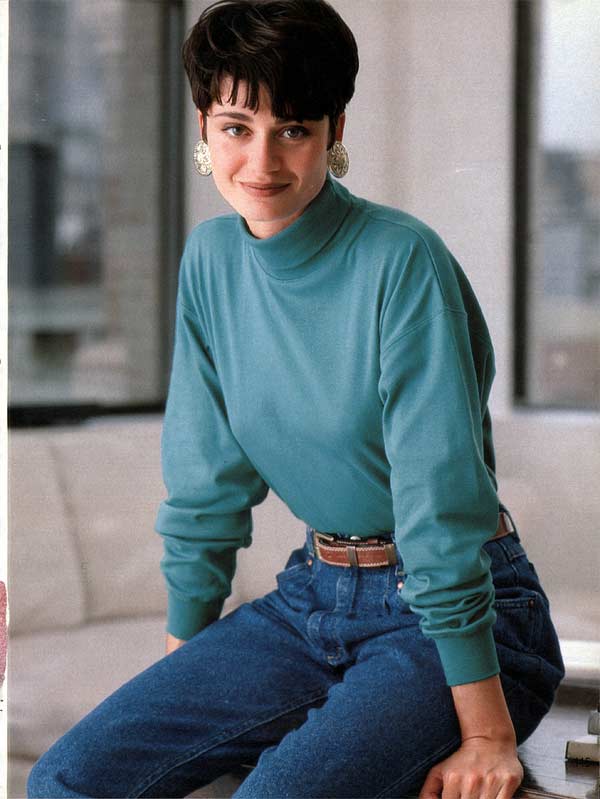
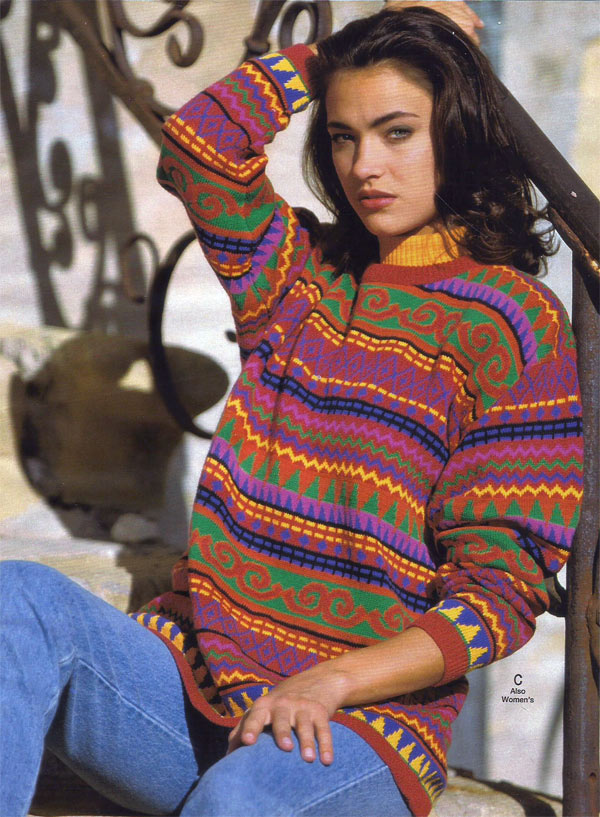
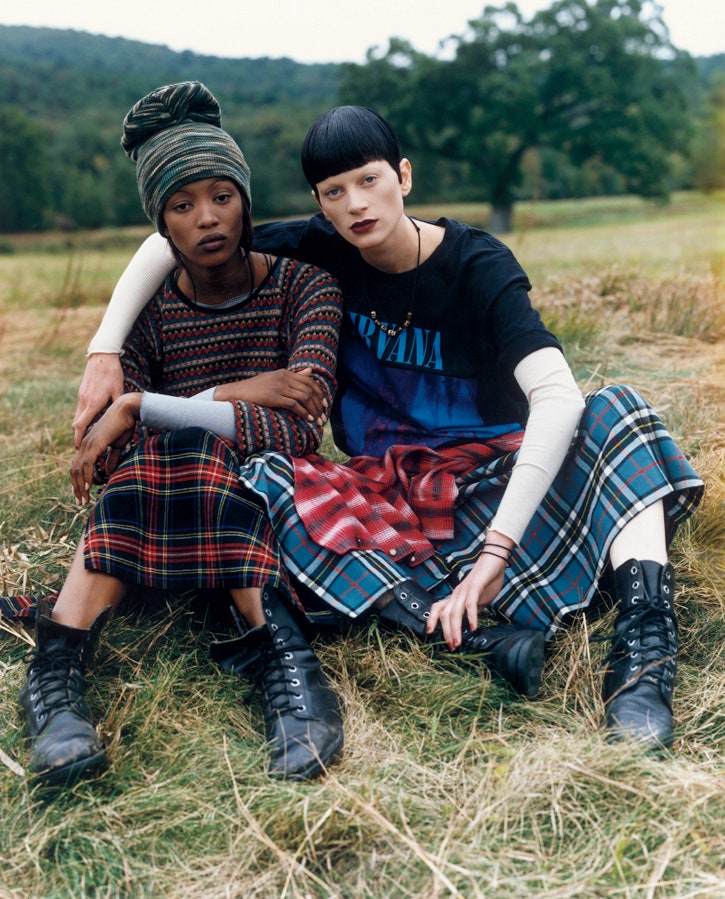
 Mid-90s Women’s Fashion
Mid-90s Women’s Fashion
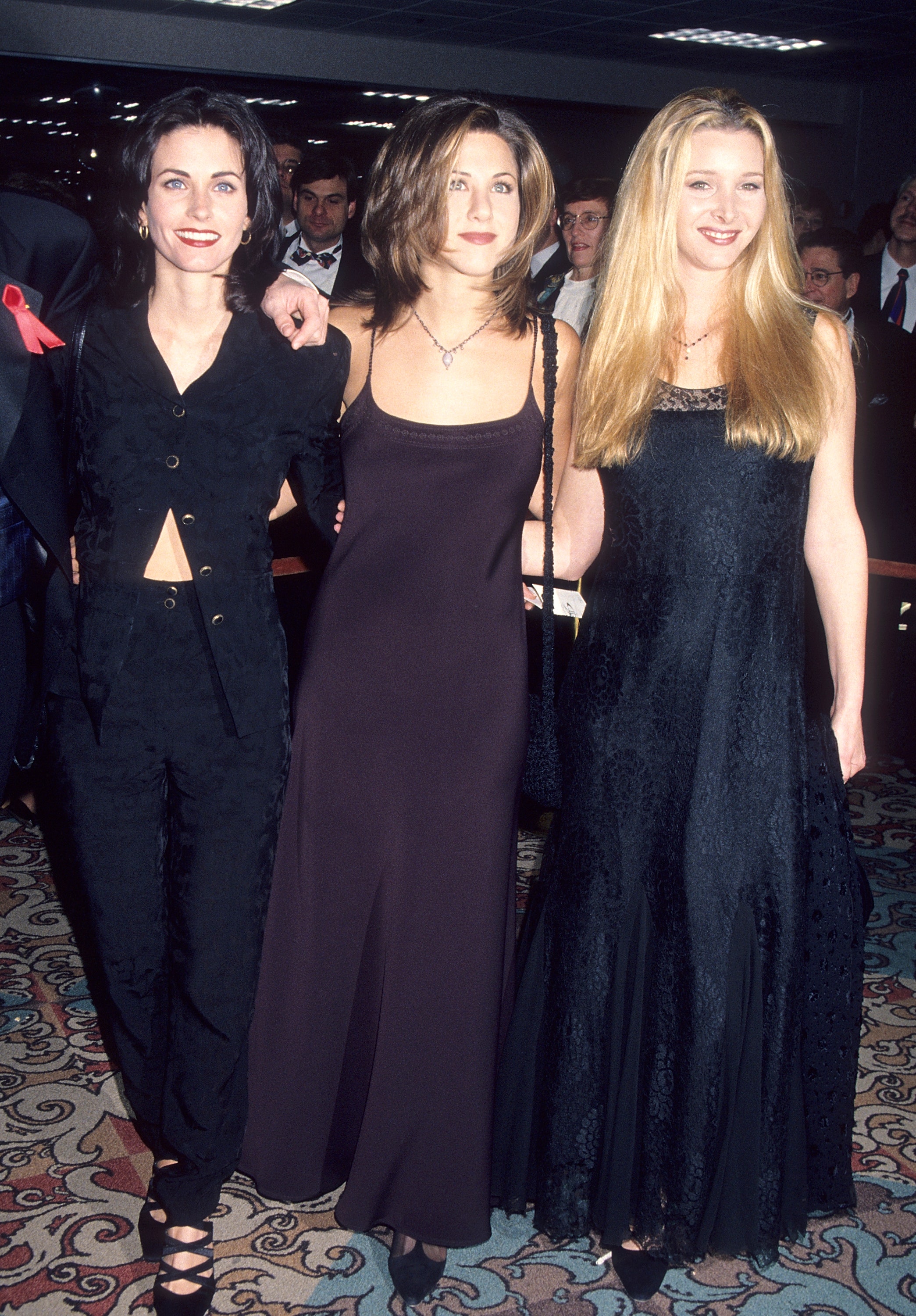

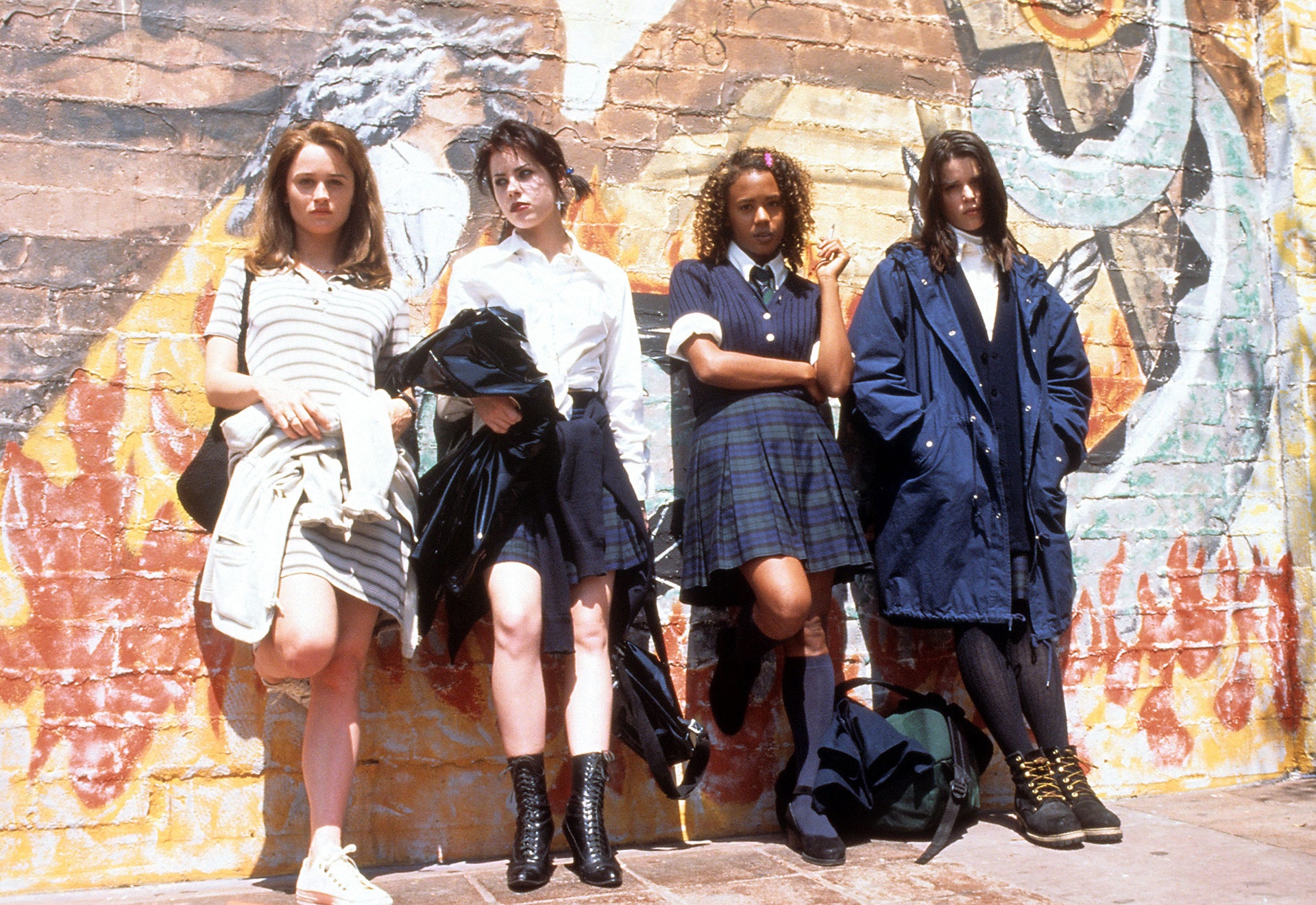
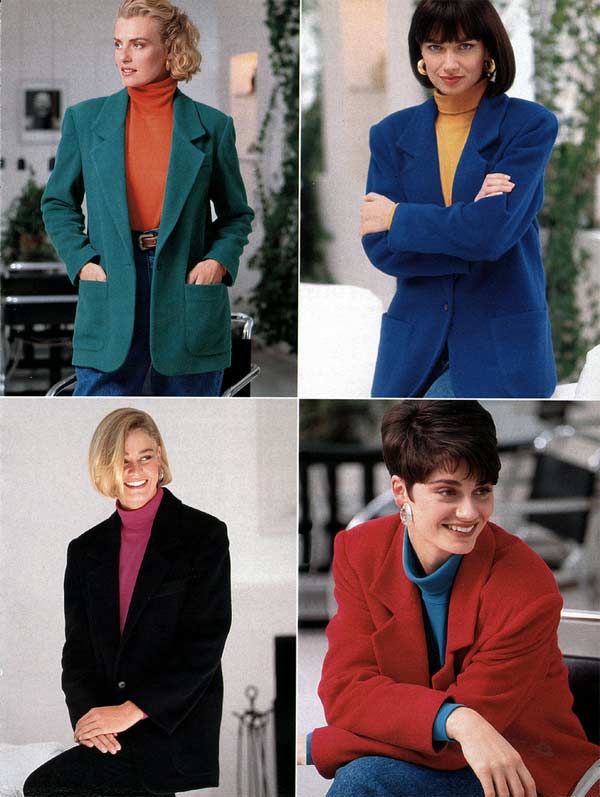 Late-90s Women’s Fashion
Late-90s Women’s Fashion
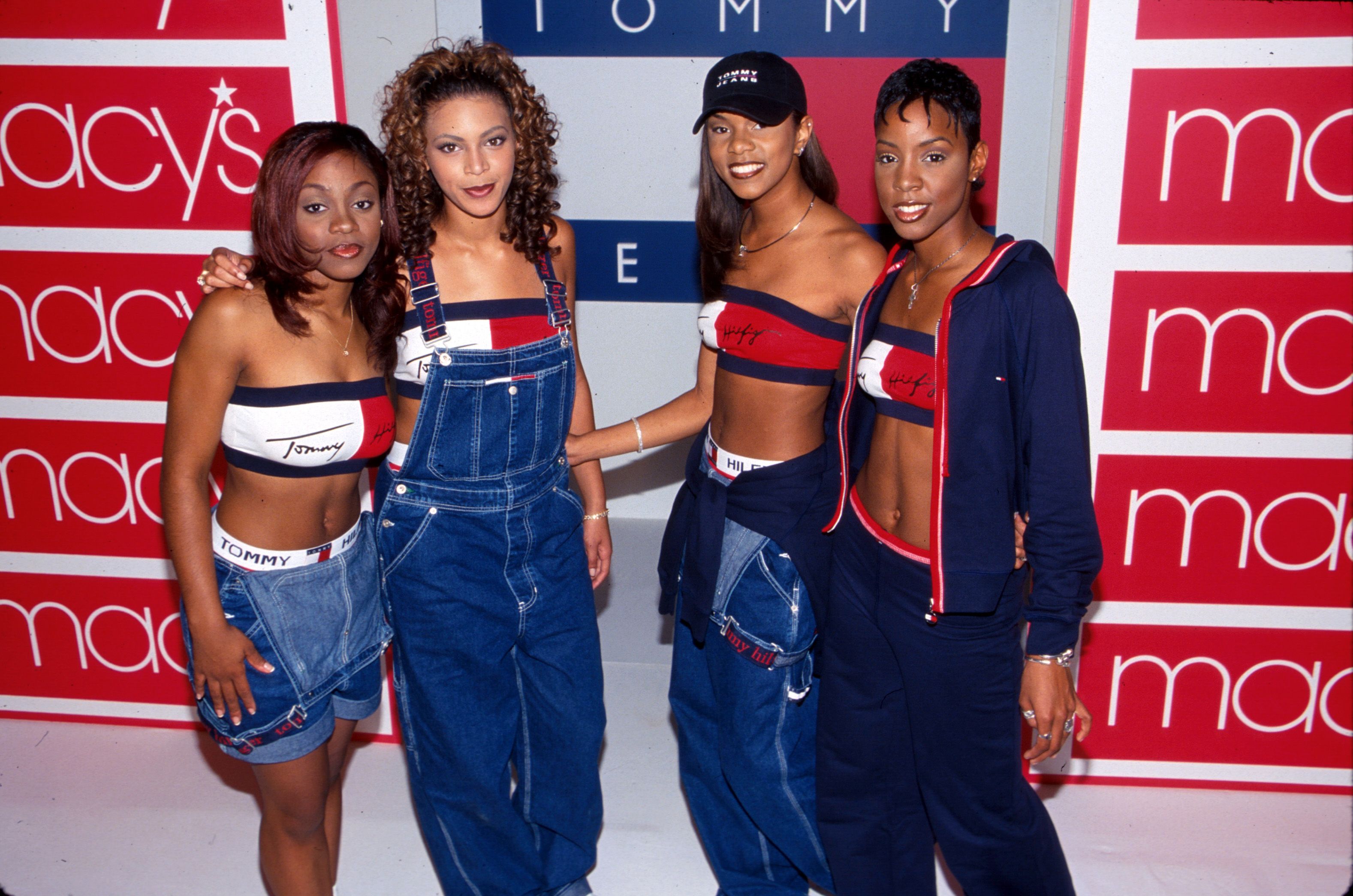
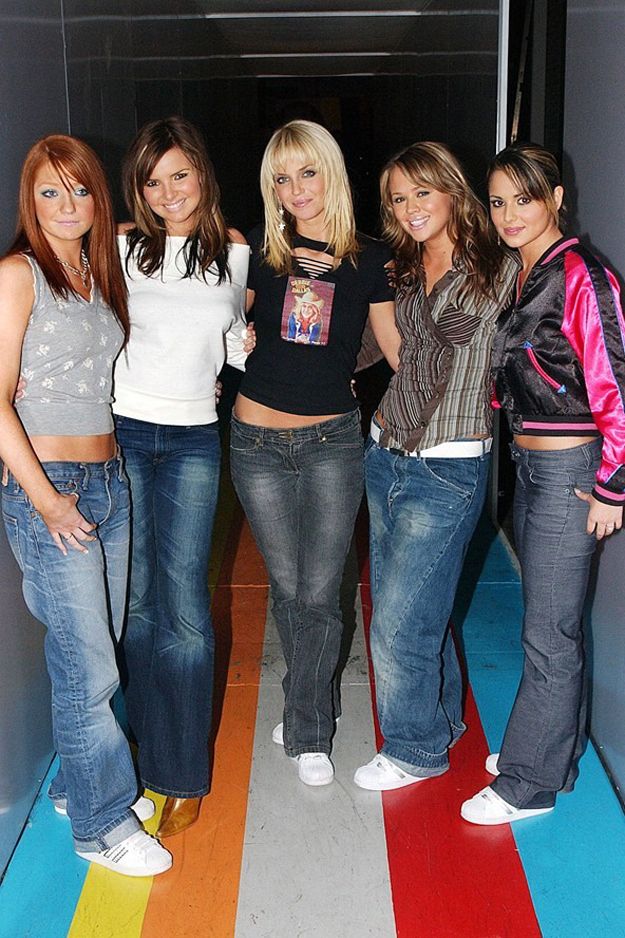
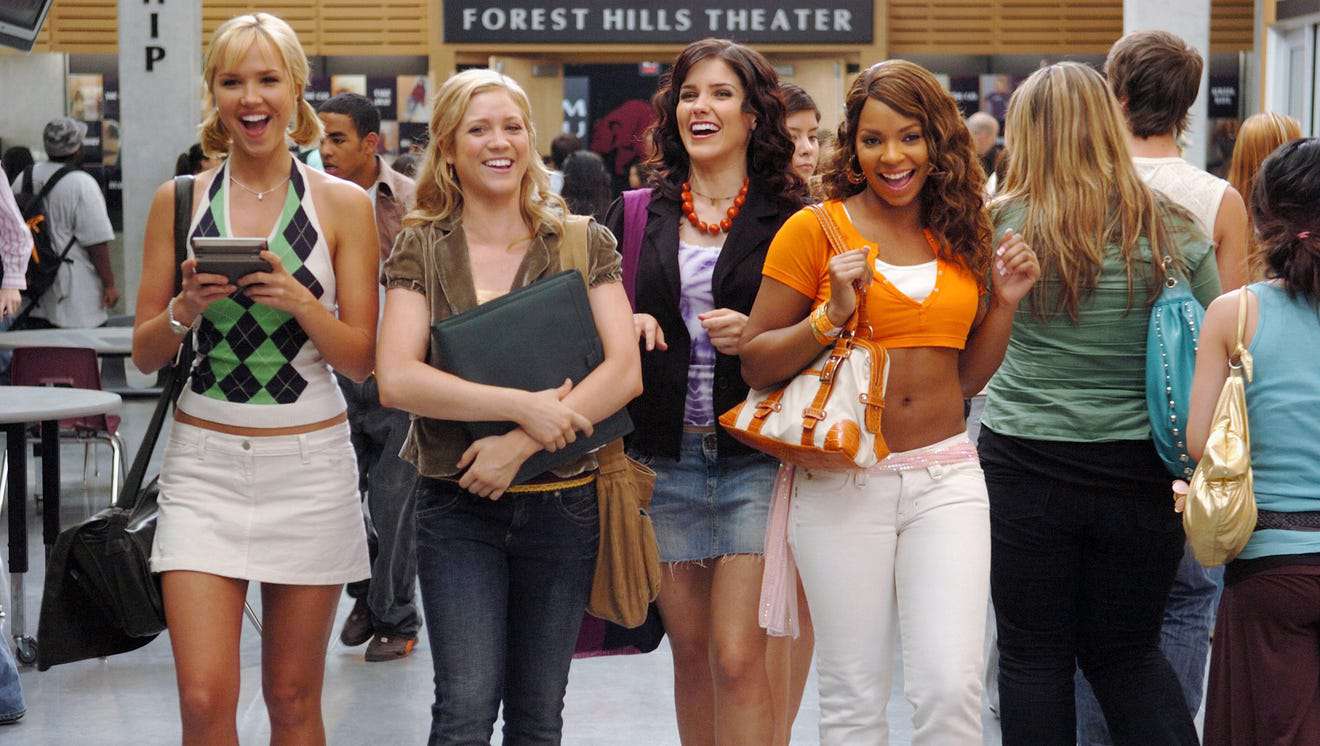

 Early-90s Men’s Fashion
Early-90s Men’s Fashion

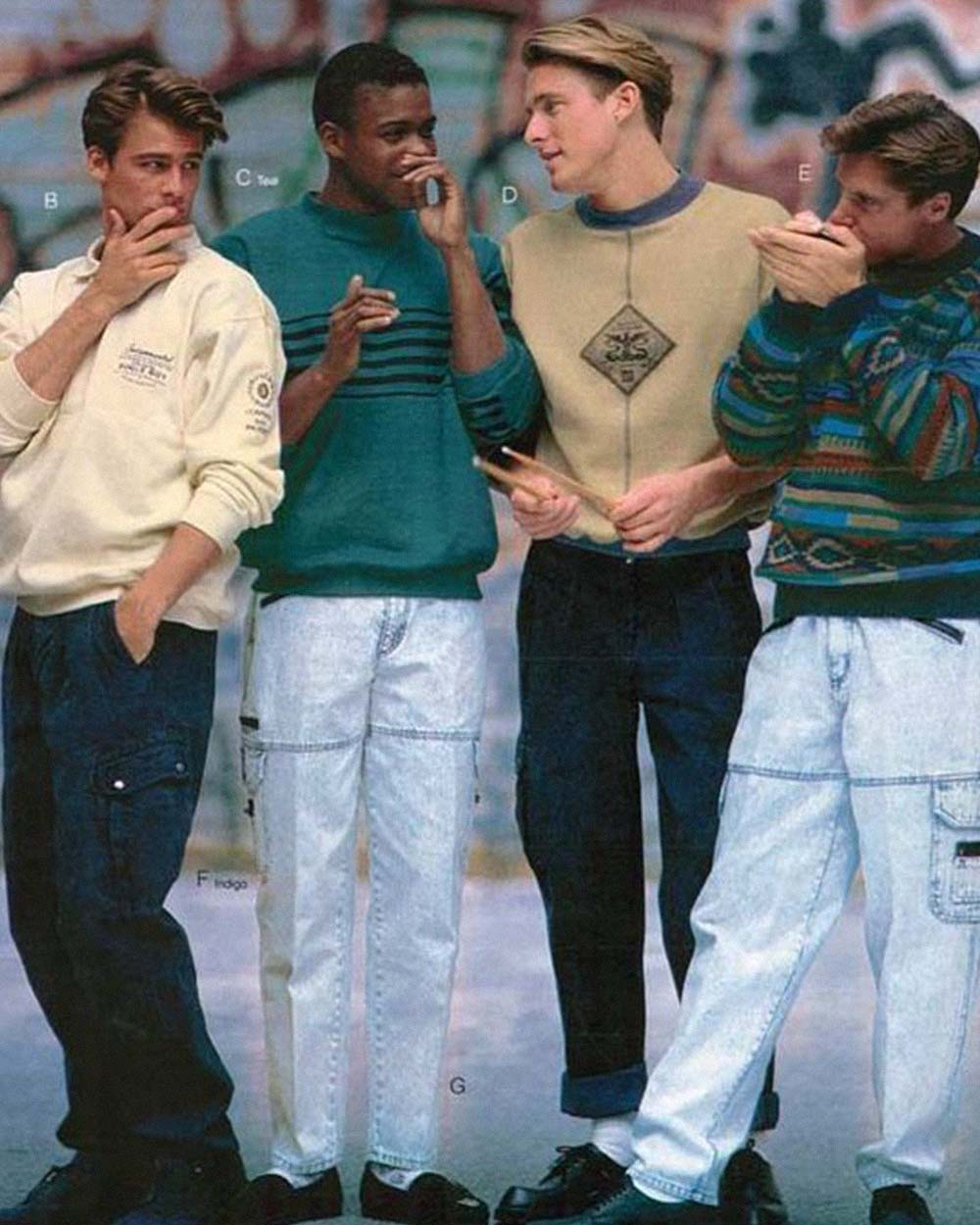
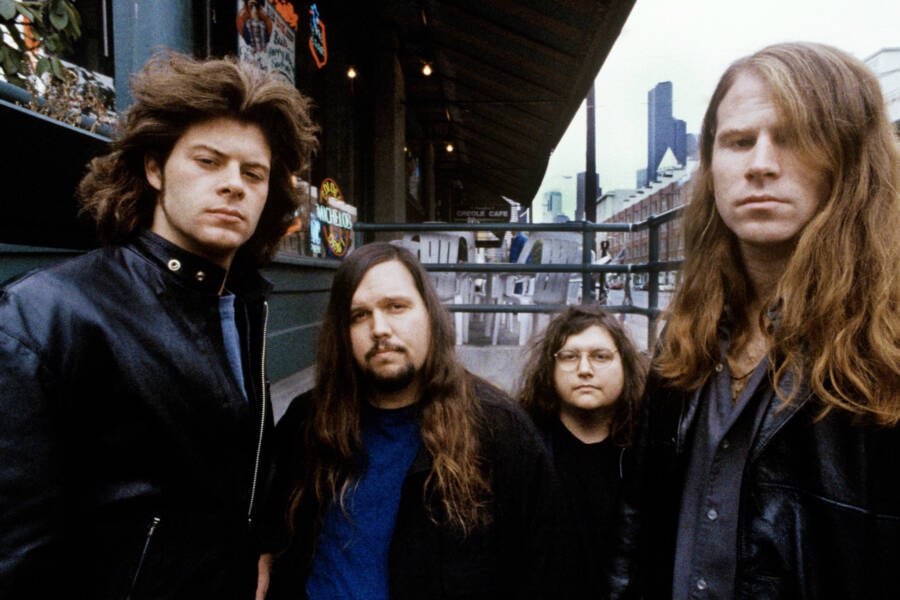
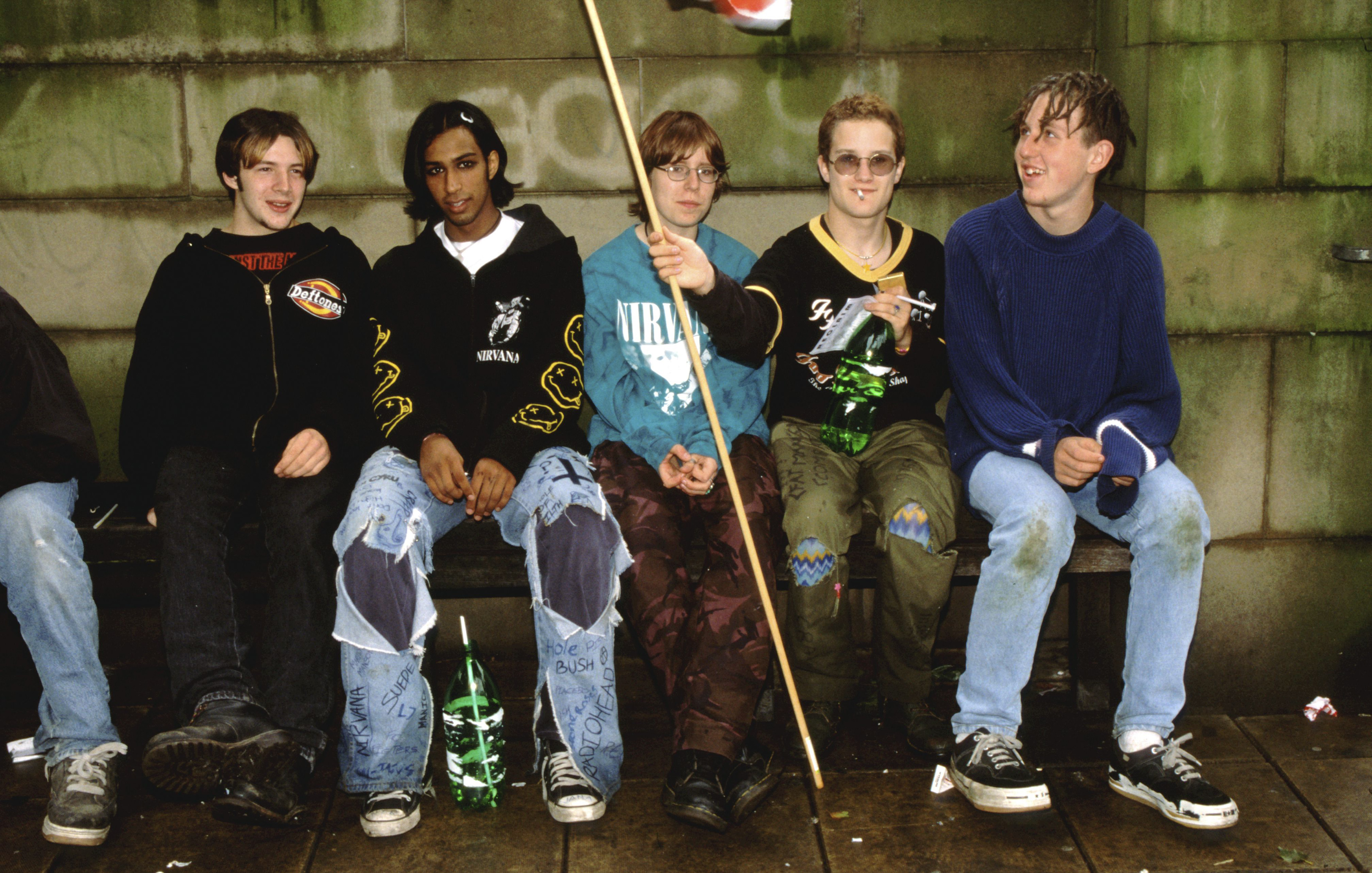
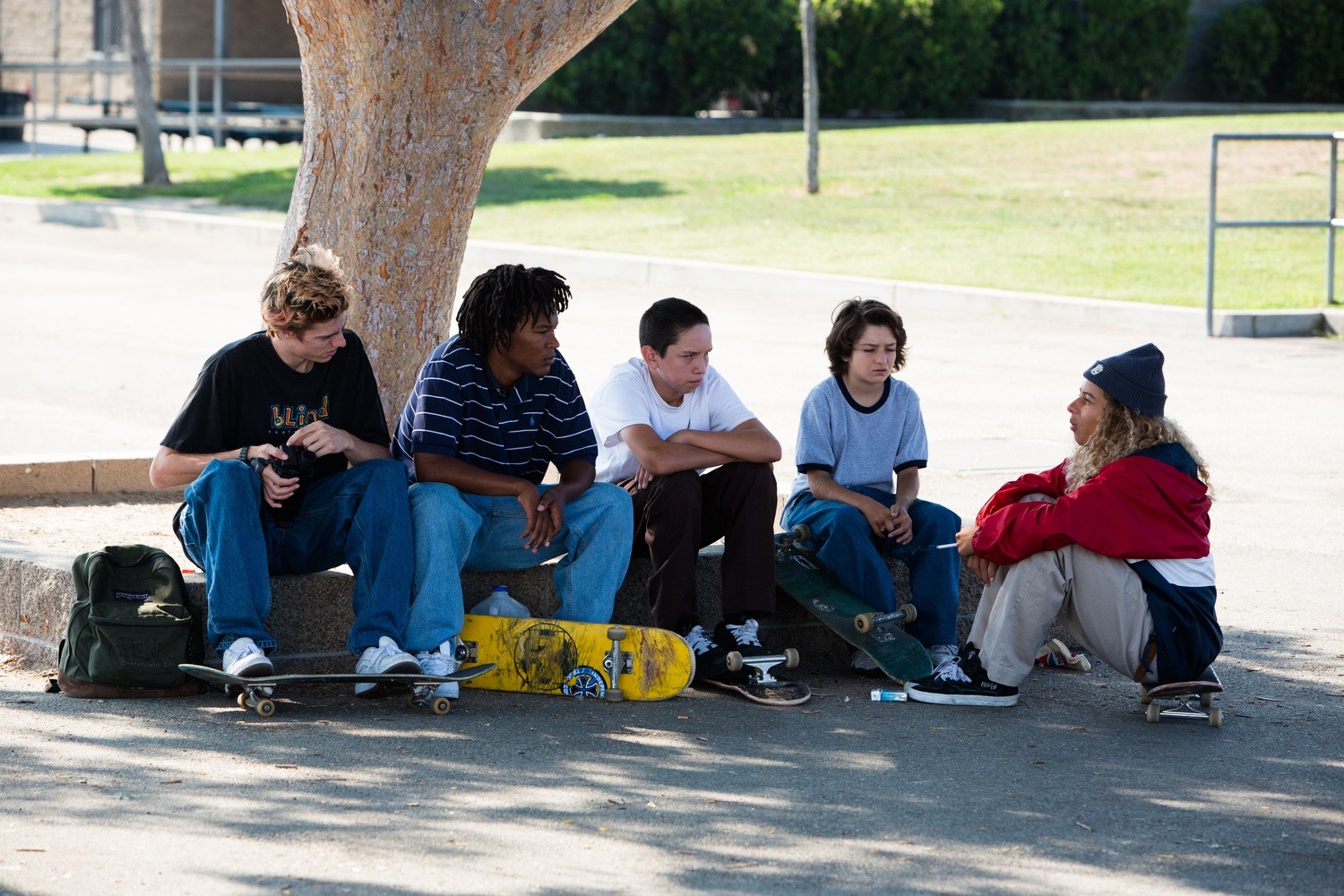 Mid-90s Men’s Fashion
Mid-90s Men’s Fashion
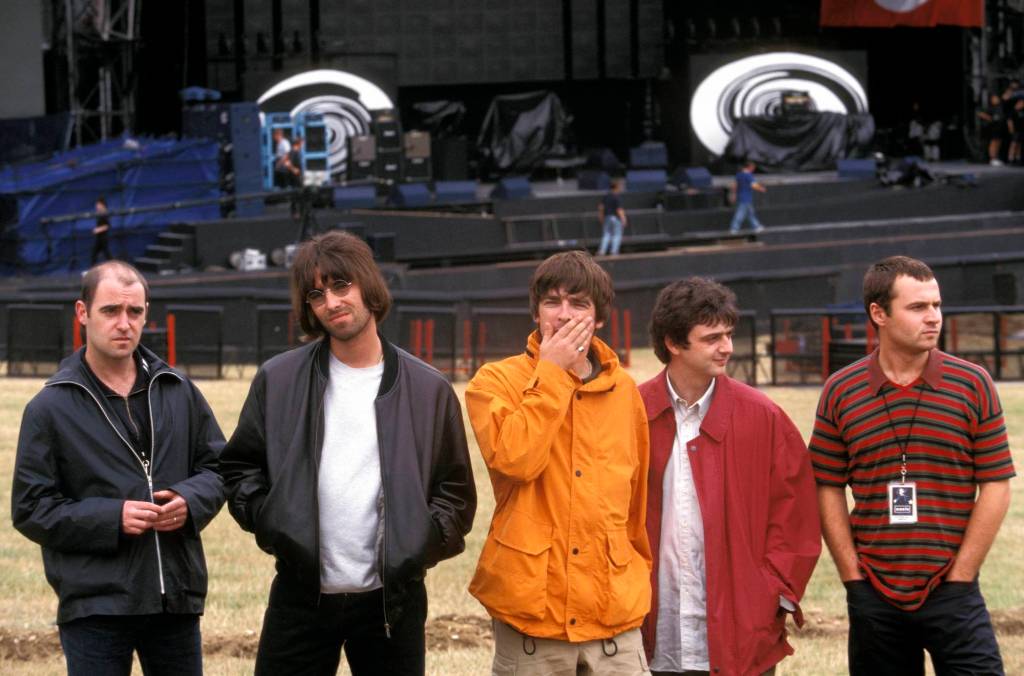
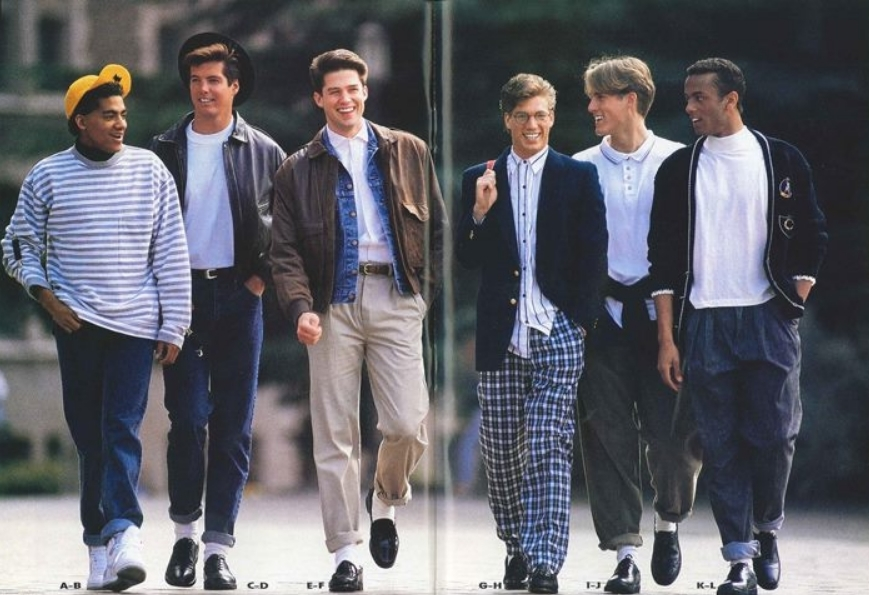

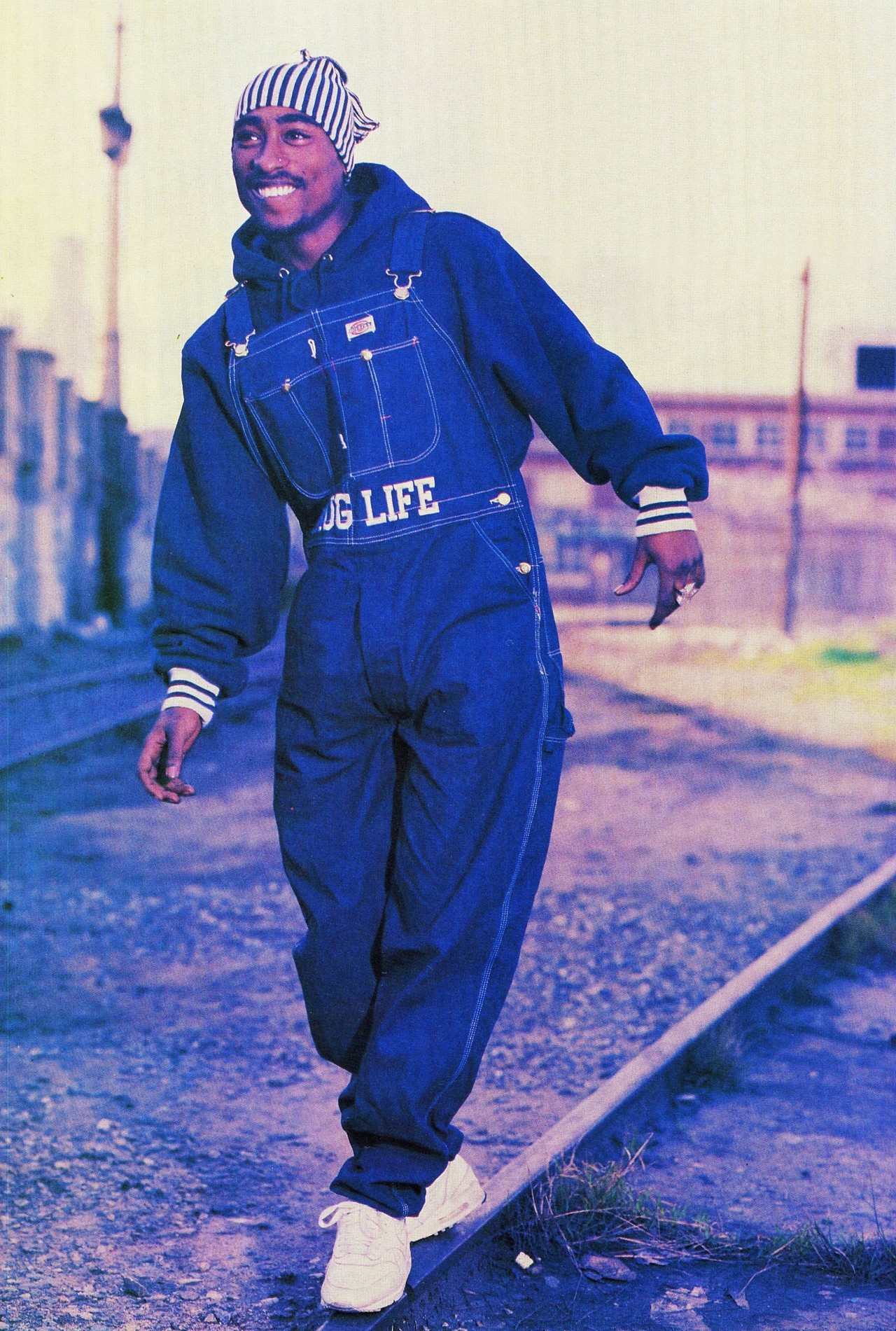
 Late-90s Men’s Fashion
Late-90s Men’s Fashion
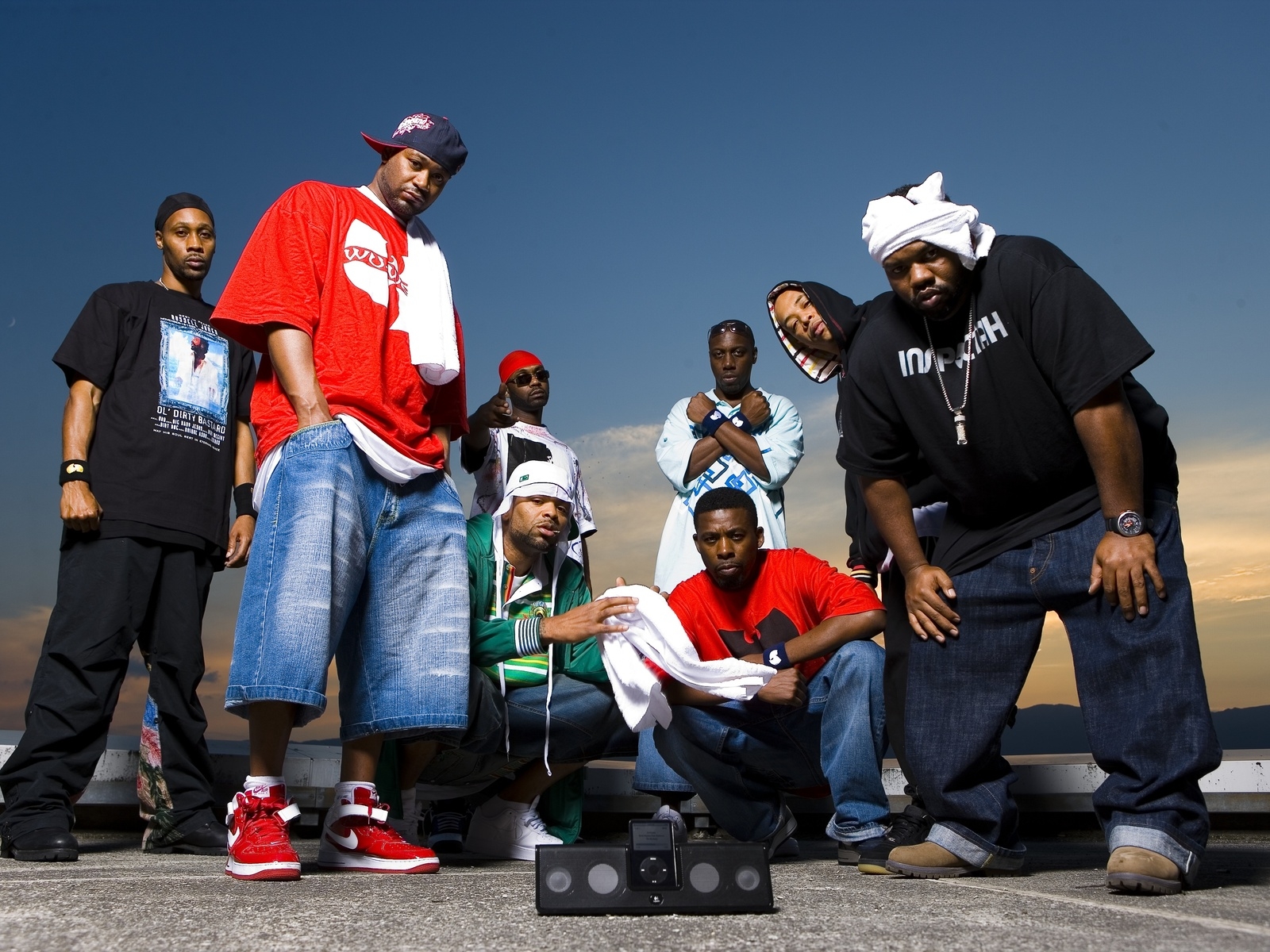
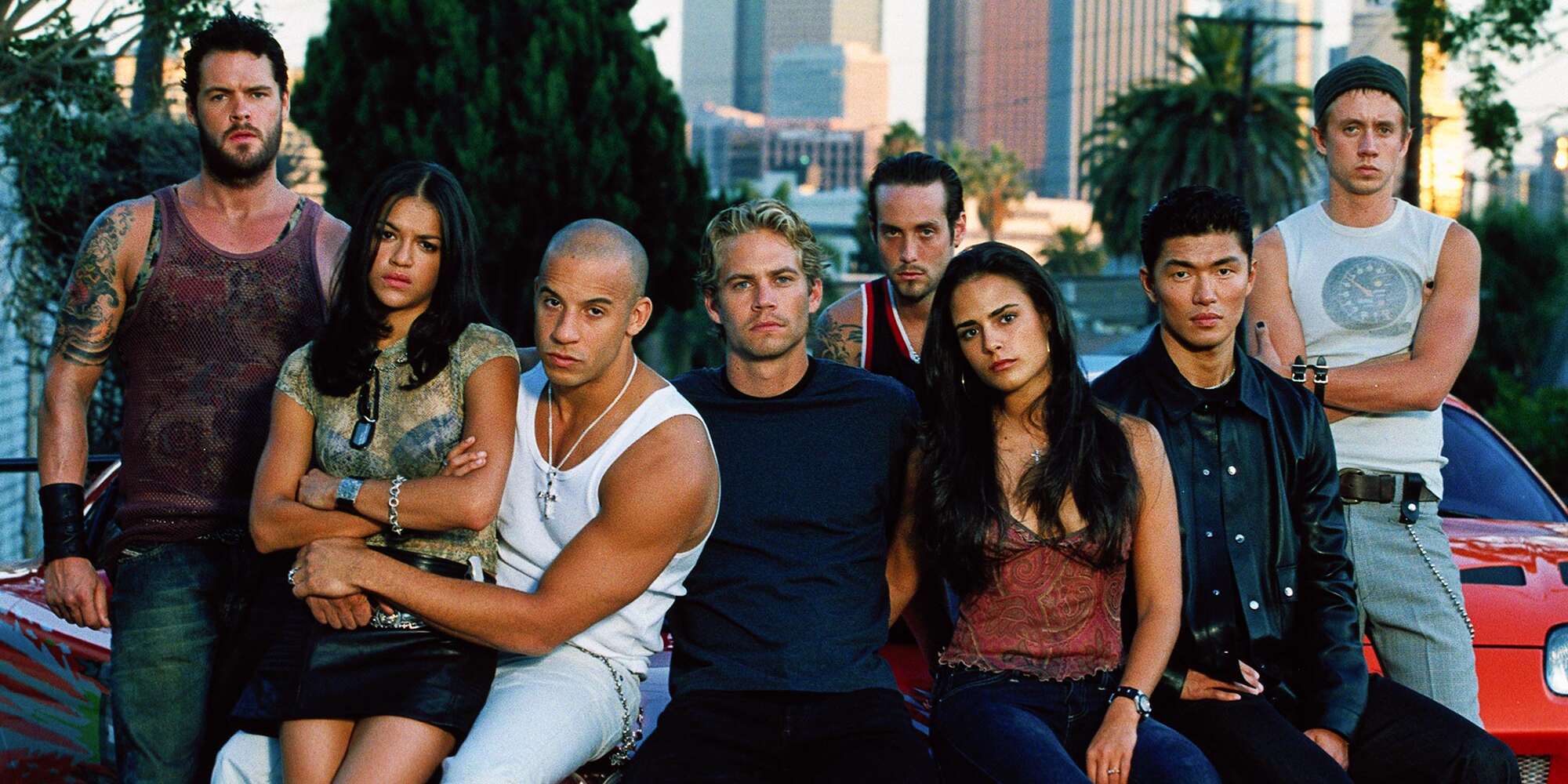
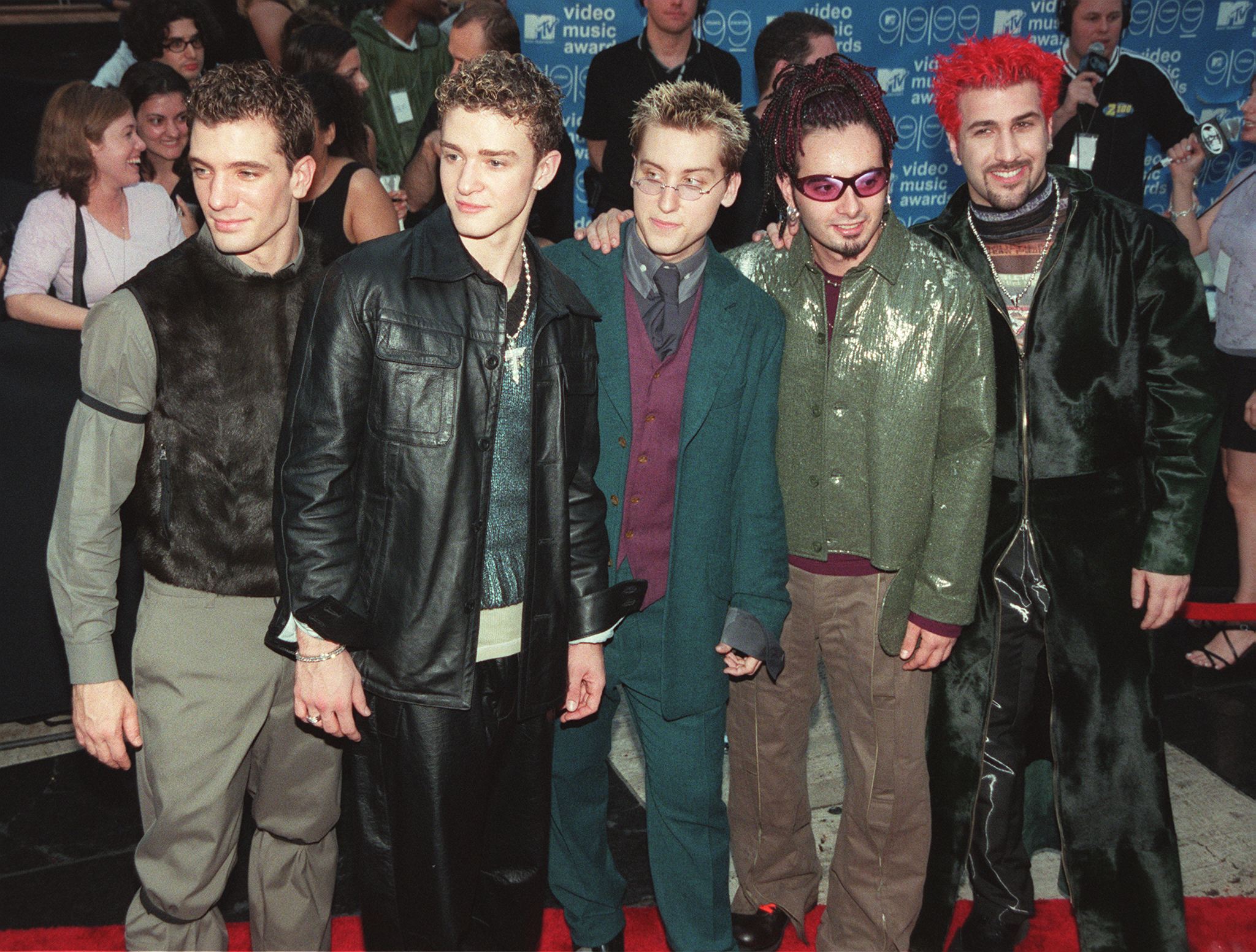
Fashion in the 1990s was defined by a return to minimalist fashion in contrast to the elaborate and flashy trends of the 1980s. In spite of this, a notable shift was the mainstream adoption of tattoos and body piercings. In the early 1990s, several 1980s fashions were very stylish. However, the popularity of grunge and alt-rock helped bring the simple, unkempt grunge look to the mainstream by 1994. This led to the popularization of the casual chic look that included T-shirts, jeans, hoodies, and sneakers, a trend which continued into the 2000s. Vintage fashions gained popularity in the decade. By contrast, showing skin became more acceptable, with skimpy outfits including midriff tops, spaghetti strap tops, and miniskirts. More in depth info can be found here and here
Early 90s Women’s Fashion



- Neon Colors - In the US and other parts of the world, popular trends included bold geometric print clothing in neon colors like electric blue, orange, and fluorescent pink. Patterns included triangles, zigzag lightning bolts, diamonds, and more. These were popular on button-down Western shirts, colored jeans, spandex leggings, halterneck crop tops, bike shorts, and more.
- Leggings/Exercise-Wear - From 1991 on, sports bras, hoodies, leotards, and bodysuits worn as tops were popular with woman in the UK, Europe, and America. A common outfit was to wear a skirt, dress shorts, minidress with black tights, white socks, and white athletic sneakers. Sneakers like Keds, Converse All Stars, Nike Airs, or reebok hi-top running shoes became popular. Leggings worn over pantyhose or tights w/ a pair of flats was also common. This sort of fashion continued into the late 90s as lounge wear and every day comfortable casual wear.
- Grunge - By mid 1992, grunge fashion broke into the mainstream for both sexes. It consisted of flannel shirts, ripped jeans, mom jeans, Doc Martens, combat boots, band t-shirts, knit sweaters, ripped tights, hiking boots, and eco-friendly clothing.




- Glamour Wear - By 1994, grunge fashion declined as fashion became more feminine and form fitting. Young women wore tailed skirts and trouser suits, skater dresses, animal prints, hot pants, and slim pants, amongst other items. High-shine fabrics like satin, metallics, sequins, vinyl, and silk became prominent in both clubwear and work wear. A common look was a short black slip dress worn over a light, undersized white t-shirt. It was during this period of fashion that the “sexy school girl” look/trend was popularized.
- Among women over 30, 1950s ladylike fashion made a comeback, including pencil skirts, cardigans, petticoats, and fitted suits. Popular accessories included brooches, white gloves, sheer stockings, sequins, and red lipstick.
- Work Wear - Power Dressing (fashion style enabling women to establish authority in professional environment) was the norm for women in the workplace, a persisting trend from the 80s. By 1996 however, professional women began to opt for more relaxed styles and more muted colors. Trouser suits began to replace skirts and black or white tights and pantyhose made a comeback.



- 1970s Revival - From 1997 onward, many British and American designers took cues from the disco fashion of the mid-late 1970s. This included animal print clothing, halter tops, crop tops, tube tops, maxi coats and skirts, and knee boots. By 2001, popular mainstream trends included tight shirts, bell bottoms, cropped tank tops, and military inspired clothes.
- Bright colors made a comeback as a backlash of the darker tones associated with grunge and skater culture. Other late 90s era clothing included high-wasted miniskirts, plastic chokers, knee socks, slip dresses, and high waisted trousers and cardigans.
- Casual Chic - From 1998 to 2001, unisex casual chic gained mainstream appeal, with jeans, spaghetti wrap crop tops, track suits, sweatpants, and other athletic clothing.





- Casual Clothing - Continuing from the late 80s, many young men wore a variety of casual clothing, ranging from jeans and denim jackets to polo shirts, graphic t-shirts, sport coats, and bomber jackets.
- Grunge Look - From 1991 to 1996, flannel shirts became very popular due to use in the skater subculture and grunge bands. These were padded and loose fitting. They also wore acid wash jeans, patterned sweaters with turtlenecks, anoraks, and sweatpants.
- In the US popular accessories were Converse All Stars, bucket hats, baseball caps, aviators, and combat boots.





- 1970s Revival - Flashy 1960s mod clothing was popular in the US with the success of Britpop. Fake fur became the norm as real fur went out of fashion. Popular clothing included Hawaiian shirts, brown leather jackets, velvet blazers, baseball jerseys and graphic print t-shirts.
- The 1970s were a big inspiration for the 1996 fashion season, including faux fur trimmings, jackets with bold shoulders and wide lapels, and boot -cut slacks. Pastel and bold patterns were popular and replaced black.
- Desirable accessories included loafers, chukka boots, chelsea boots, chunky digital watches, shoulder bags, and black/neon colored high-top sneakers.
- Modern Preppy - Wealthy young men continued to wear preppy fashion, though it became more casual, abandoning ascots and Oxford shoes in favor of ‘Nantucket Reds’ trousers, nautical-striped tees, casual sneakers, and gingham short sleeved shirts. Popular brands included GAP, Old Navy, and Abercrombie & Fitch
- Hip-Hop - Hip-Hop Fashion came to the mainstream, increasing the popularity in baseball jackets, baggy jeans, bomber jackets and tracksuits as casual wear. Industrial and military styles became more popular. Associated with rappers, sportswear became acceptable to wear in public, including oversized tees, baseball caps, tennis shoes, hoodies, cargo pants, and basketball or baseball jerseys. These styles persisted into the 2000s.




- Streetwear - By the late 1990s, the grunge look became unfashionable and there was a revival in streetwear clothing. These included graphic tees and jeans, and came in brighter colors.
- Business Wear - In the US, increasing numbers of men began to dress “smart-casual” and business casual.


- Women
- High/high-sided ponytails held continued popularity from the 80s, especially in sports or at the gym. These were worn with a scrunchie until the mid-90s when hair ties began to replace them.
- Bangs remained popular throughout, though by the 2000s they got smaller and a bit more flat, less poofy.
- The pixie cut and Rachel haircut were popular from 1995. Red hair became a desirable hair color, alongside feathered bangs and mini hair buns. Many dark-haired women dyed their hair a lighter color with blonde highlights.
- The late 90s saw a revival of styles such as a the Bob-cut (which featured a side, center, or zigzag parting), the ‘Farrah Fawcett’ hairstyle with highlights, ‘Felicity Curls’, the Fishtail Half-Up, and Pigtails.
- Men
- Popular styles of the 80s persisted into the 90s. These included longer hair like curtained hair, mullets and ponytails, as well as other trends like flattops, hi-top fades, and cornrows.
- The mid-90s saw men’s hairstyle trends diverge. Younger men often adopted the caesar cut, either natural or dyed. More rebellious men opted for longer, unkempt hair inspired by the grunge scene. Curtained hair saw its peak popularity and sideburns went out of style.
- Professional men over 30 often sported conservative bouffant haircuts, ‘regular’ hair cuts, or the Caesar cut.
- By the late 90s, long hair began to go out of fashion. Besides curtained hair, spiky hair, bleached hair, crew cuts and the quiff became popular. Dark haired men dyed spikes blonde or added wavy blonde streaks, which continued into the 2000s. For Blacks, cornrows and the buzz cut were popular and continued into the 2000s.
- Grunge - Grunge took over in popularity from new wave and heavy metal fashion, hitting mainstream by the mid-90s. It lead to a decline in bright colors from 95 - 99, and was dominated by flannels, jeans, and dark colors like maroon, forest green, indigo, brown, white, and black. It was popular amongst skaters for being hard wearing whilst cheap and offering good protection.
- Rave and Clubwear - Popular fashion amongst the rave subculture included plastic aesthetics, fetish fashion (PVC miniskirts and tops), DIY and tie-dye outfits, retro sportswear, and outfits themed around sex (showing skin and nudity, such as transparent clothing or crop tops), war (combat boots or camo), and sci fi. Rave clothing was taken up by the fashion industry and included nylon shirts, vests, bell-bottoms, neoprene jackets, and other clothing in bright and neon colors. Common accessories included tattoos, body piercings, wristbands, collars, pacifiers, glow sticks, and goggles.
- Hip-Hop - With the growth in hip-hop and rap’s popularity and influences of various groups and artists, fashion inspired by them became a popular subculture. The sagging pants trend began in the 1990s and continued until the 2010s. Common clothing included wide leg jeans, bomber jackets, tracksuits, baseball and snapback caps (often worn backwards). Accessories included gold chains and sovereign rings.
- Goth - Mid to late 90s, gothic fashion peaked in popularity for those attempting to break mainstream. Black leather trench coats, winklepicker shoes, velvet blazers, long black hair, fetish clothing, and tight pants were common on both sexes. Girls also wore Victorian inspired corsets, lace gloves, boots, and short leather skirts.
- Preppy - A conservative, preppy look of the 80s that was popular amongst wealthy teens in the Eastern US until the late 90s. Typical clothing included khaki chinos, ankle length jeans and plain pants, blazers, brogues, leggings, and other clothing associated with rich, private school children.
Sports in the 1990s: Much of what was newsworthy in the sports field had little to do with the field of play. Professional athletics had become business and kept getting bigger. Cities paid for huge stadiums to lure league franchises and team owners and players made huge amounts of money, and demanded more. A strike in Major League Baseball over player salaries resulted in the cancellation of the 1994-95 World Series for the first time in ninety years. Scandals in various sports also came to light, varying from corruption to drug abuse, turning heroes into villains, staining legacies, and destroying careers. Other athletes tarnished reputations on and off the field.
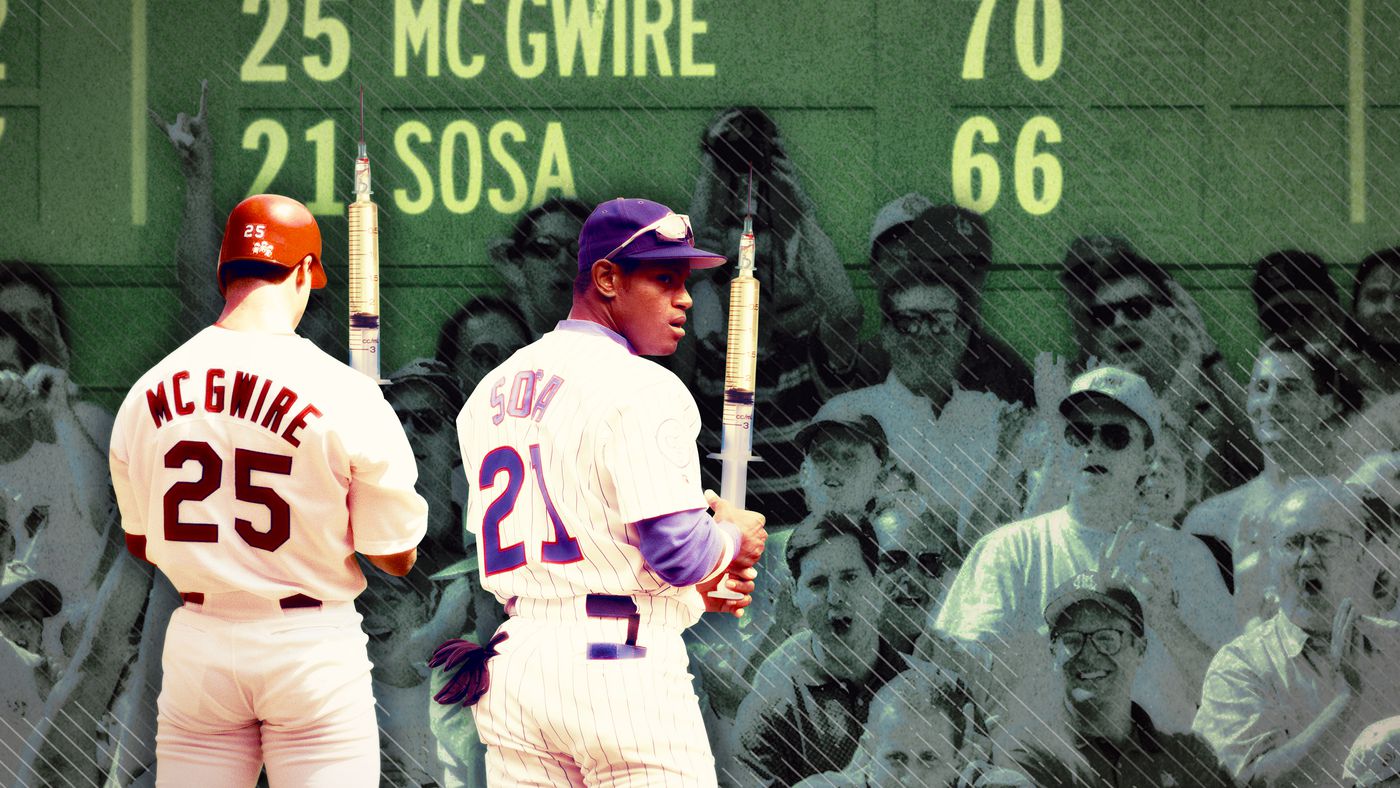


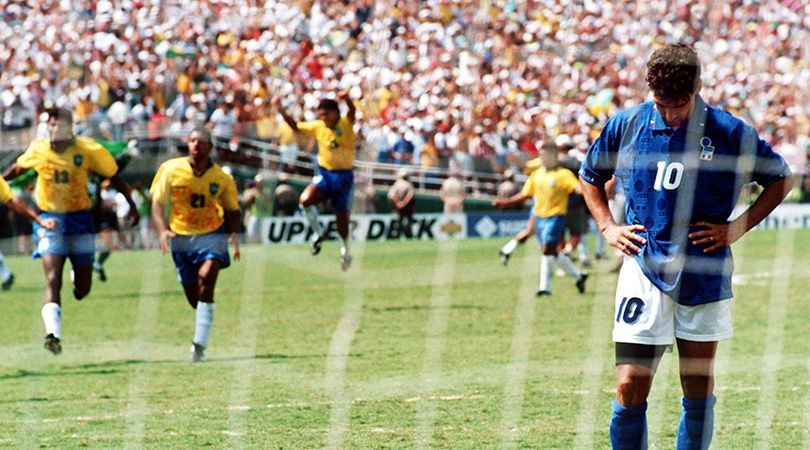
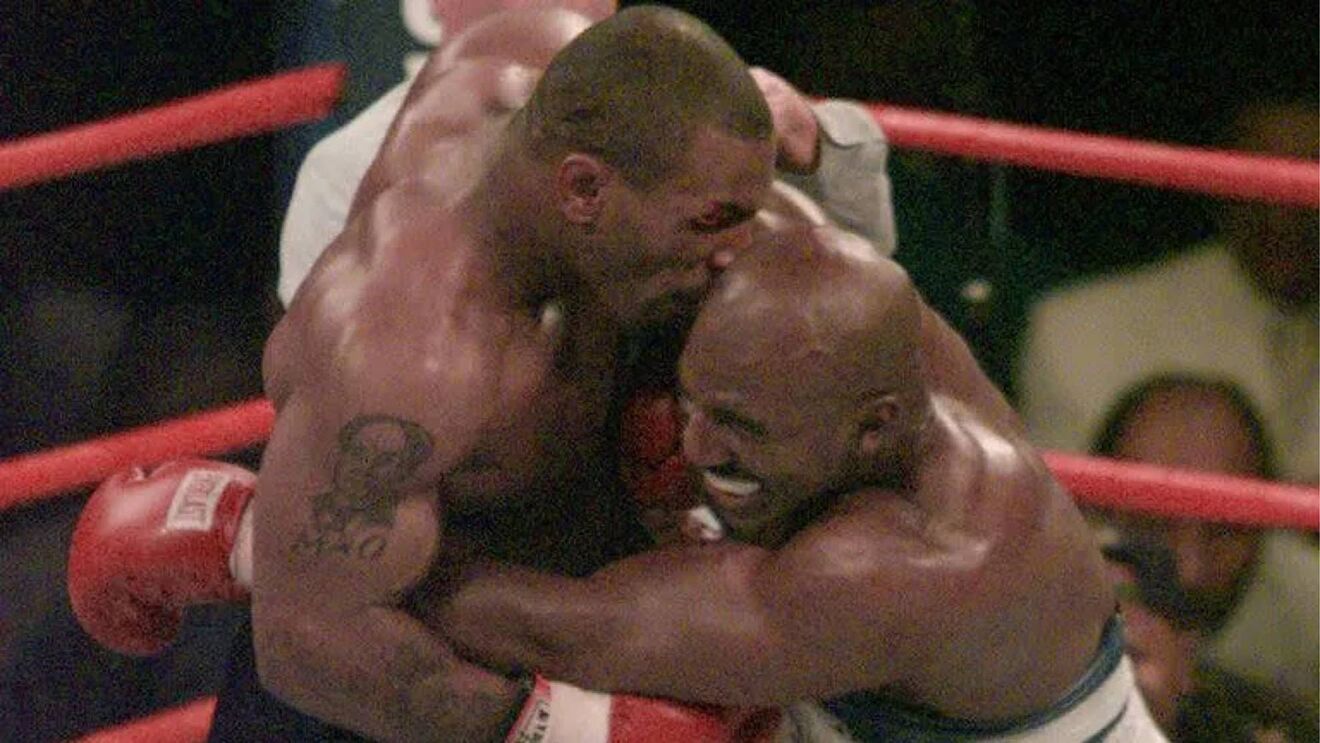

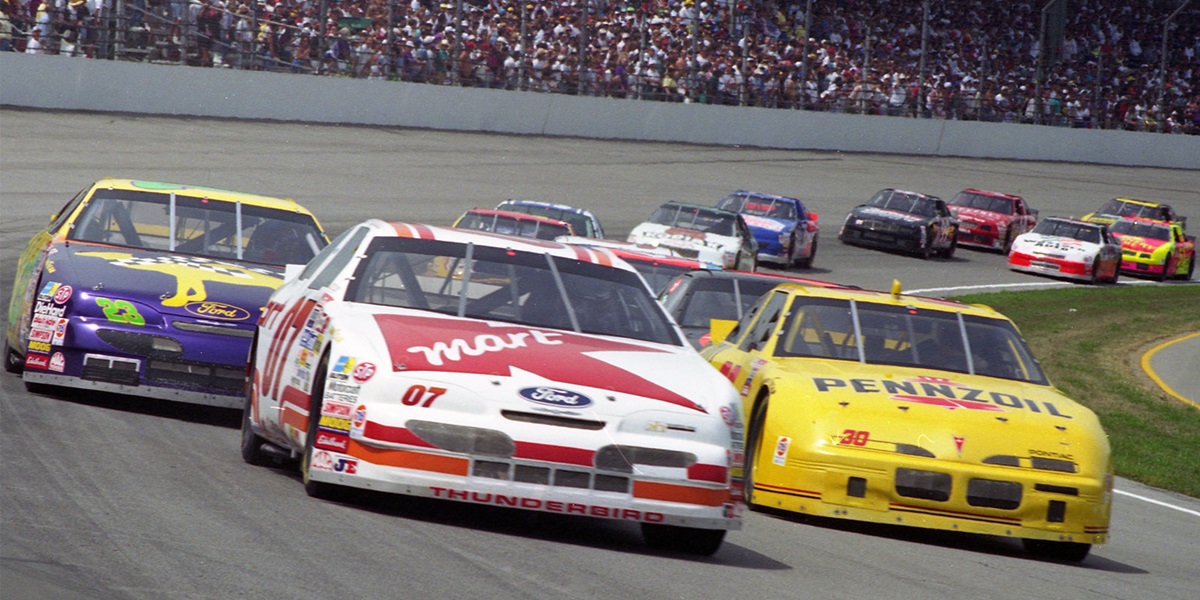
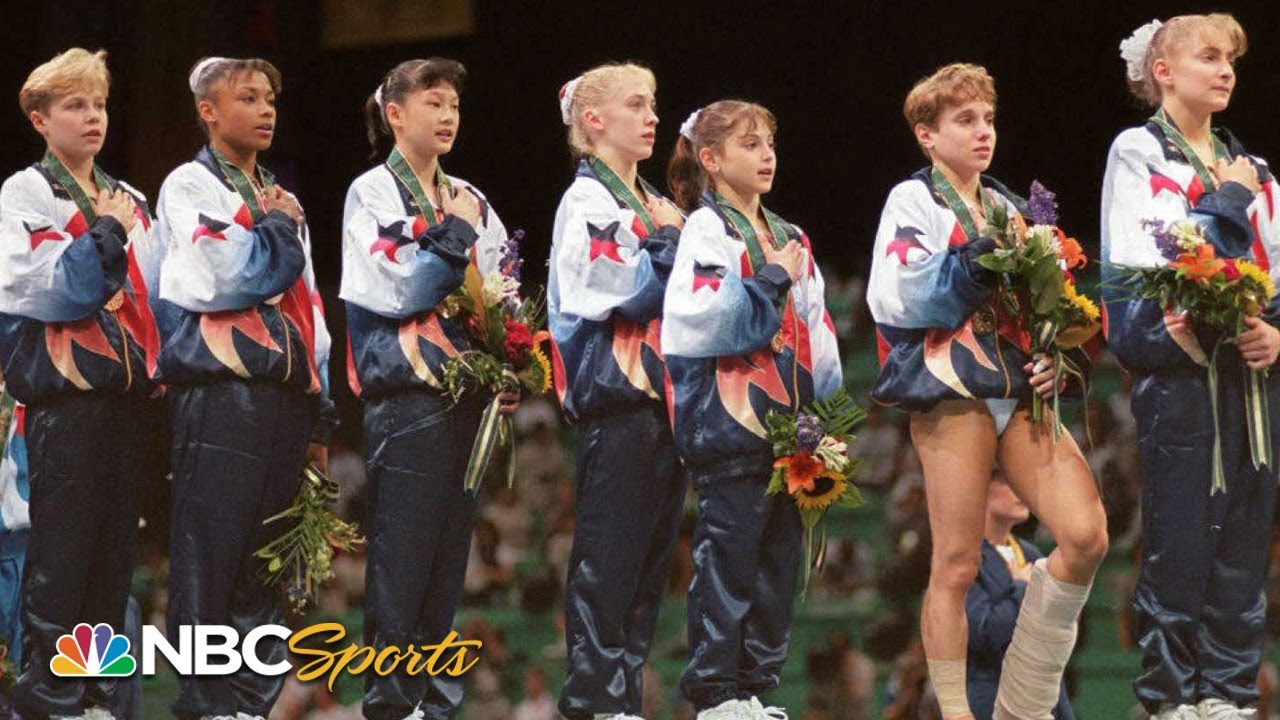

- MLB adds the Miami Marlins, Colorado Rockies, Tampa Bay Rays, and Arizona Diamondbacks
- 1994-95 MLB Strike - The 94 and 95 series were unable to play full series’ lengths. The strike was in response to proposed salary caps from team owners. The strike lasted 232 days, and soured many baseball fans’ support for the sport.
- 1994 - Michael Jordan played for the Birmingham Barons for the 94 season; it was so lackluster he returned the basketball the next year.
- 1996 - Yankees make a comeback after an 18 year slump against the Atlanta Braves, winning the World Series 27.
- In 1998, the Home Run race to beat Roger Maris’ record 61 home runs in 1961 captivated baseball fans. Mark McGwire and Sammy Sosa bested the record with 70 and 66 home runs respectively. This helped reinspire interest in Major League Baseball in the US
- MLB World Series Wins - 1990: Cincinnati Reds over Oakland Athletics, 1991: Minnesota Twins over Atlanta Braves, 1992: Toronto Blue Jays over Atlanta Braves, 1993: Toronto Blue Jays over Philadelphia Phillies, 1995: Atlanta Braves over Cleveland Indians, 1996: New York Yankees over Atlanta braves, 1997: Florida Marlins over Cleveland Indians, 1998: New York Yankees over San Diego Padres, 1999: New York Yankees over Atlanta Braves
- January 15, 1990 - Joe Montana sets the NFL record for postseason touchdowns w/ numbers thirty and thirty-one
- Dallas Cowboy Domination - The Cowboys won the Super Bowls in 1993, 1994, and 1996.
- June 17, 1994 - Former Buffalo Bills running back, O.J. Simpson flees from police in a white Ford Bronco and is summarily arrested. The chase was so enthralling that many channels interrupted normal broadcasting to cover it, including the NBA Finals between the Houston Rockets and the New York Knicks.
- January 25, 1998 - At Super Bowl XXXII, the Denver Broncos beat the Green Bay Packers. One of the most iconic moments involved Broncos quarterback John Elway making a drive, leaping into the air, and was swiped by three Packers, spinning him like a helicopter but giving the Broncos a first down. The Broncos scored and would ultimately win.
- NFL Super Bowl Champions - 1990, XXIV: San Francisco 49ers over Denver Broncos, 1991 XXV: New York Giants over Buffalo Bills, 1992 XXVI: Washington Redskins over Buffalo Bills, 1993 XXVII: Dallas Cowboys over Buffalo Bills, 1994 XXVIII: Dallas Cowboys over Buffalo Bills, 1995 XXIX: San Francisco 49ers over San Diego Chargers, 1996 XXX: Dallas Cowboys over Pittsburgh Steelers, 1997 XXXI: Green Bay Packers over New England Patriots, 1998 XXXII: Denver Broncos over Green Bay Packers, 1999 XXXIII: Denver Broncos over Atlanta Falcons, 2000 XXXIV: St. Louis Rams over Tennessee Titans

- March 4, 1990 - Hank Gathers, one of the best college basketball players, collapsed and died on the court from a heart condition.
- June 12, 1991 - The 1991 NBA Finals takes place between the Chicago Bulls and the LA Lakers. This served as Michael Jordan’s first NBA Finals appearance, Magic Johnson’s last, and would signal the Bull’s dominance throughout the 90s, winning six NBA championships in 1991, 1992, 1993, 1995, 1996, and 1997.
- Nov 8, 1991 - Magic Johnson announced that he was HIV-positive and would retire from basketball. This shocked the world, and Johnson became the highest-profile celebrity to contract the virus. He still played on the 1992 Dream Team and briefly played for the Los Angeles Lakers for the 95-96 season.
- Mar 28, 1992 - Christian Laettner, of the Duke Blue Devils, scores the game winning shot. Down by one point with 2.1 seconds left in the final against Kentucky, Grant Hall threw a full-court pass to Laettner, who caught the ball at the free throw-line and made the last second shot, winning the game for his team. The shot is considered one of the greatest moments in college basketball history.
- April 5, 1993 - Chris Webber of the Michigan Wolverines were playing against the North Carolina Tar Heels. He calls a timeout when the team has no timeouts, resulting in a technical foul and the Tar Heels win 77-71. This is one of the most embarrassing moments in college basketball history.
- October 6, 1993 - Michael Jordan announced his retirement from the Chicago Bulls, shocking the world. After a middling attempt in baseball, Jordan returned to the Bulls in 1995 and led them to three more championship victories.
- May 7, 1994 - Eighth seed Denver Nuggets pull off the biggest upset in NBA history, beating the one-seed Seattle SuperSonics on their home court.
- NBA Champions - 1990: Detroit Pistons over Portland Trail Blazers, 1991: Chicago Bulls over LA Lakers, 1992: Chicago Bulls over Portland Trail Blazers, 1993: Chicago Bulls over Phoenix Suns, 1994: Houston Rockets over New York Knicks, 1995: Houston Rockets over Orlando Magic, 1996: Chicago Bulls over Seattle SuperSonics, 1997: Chicago Bulls over Utah Jazz, 1998: Chicago Bulls over Utah Jazz, 1999: San Antonio Spurs over New York Knicks, 2000: LA Lakers over Indiana Pacers

- 1994 - US hosts the FIFA World Cup, and would hold records for the largest attendance per game during the World Cup finals.
- 1994 - The FIFA World cup final between Brazil and Italy saw no goals between the two teams, and went to penalties. In a moment of horror for all Italians watching, footballing legend Baggio missed the final penalty to tie with Brazil, allowing Brazil to take the championship with 3-2 PSO.
- 1999 - U.S. wins the Women’s World Cup after scoring the winning penalty. This was the second Women’s World Cup victory for the U.S. team, making Brandi Chastain an international superstar and icon.
- FIFA World Cup Champions: 1990: West Germany beats Argentina, 1-0. 1994: Brazil beats Italy, 3-2 in penalties. 1998: France defeats Brazil, 3-0.
- FIFA Women’s World Cup Champions: 1991: United States beats Norway, 2-1. 1995: Norway beats Germany, 2-0. 1999: United States beats China, 5-4 in penalties.

- February 11, 1990 - One of the greatest upsets of all time, Buster Douglas shocked the world and knocked out Mike Tyson in the 10th round. Tyson had never lost before and Douglas was a 42-1 underdog.
- Nov 5, 1994 - George Foreman beats Michael Moorer for the World Boxing Association and International Boxing Federation heavyweight titles. He was 45 years old at the time and the oldest heavyweight champion of all time.
- June 28, 1997 - Mike Tyson vs Evander Holyfield - During the third round, a frustrated Tyson nearly bit off Holyfield’s ear. He wasn’t disqualified until he bit Holyfield’s other ear at the end of the same round.

- April 13, 1997 - Tiger Woods, only a year into his professional golf career, wins his first Masters’ Tournament at 21, becoming the youngest winner of the competition in history.
- 1993 - 2000 - Pete Sampras, the ‘King of Grass’, won Wimbledon seven times and held the title as #1 ranking for 286 weeks. He destroyed his biggest rival, Andre Agassi in 1999 at the Wimbledon Final.
- April 13, 1993 - Then #1 ranked Tennis Player Monica Seles was stabbed during a match in Hamburg against her rival Steffi Graf by a deranged fan of Graf, believing this would help Graf win the match.
- 1999 - Serena Williams becomes the second African-American woman to win a grand slam title in tennis, beating Martina Hingis.

- 1990s - NASCAR sees a boom decade, fueled in part by new markets, “Days of Thunder” starring Tom Cruise, and the rivalry between Dale Earnhardt and Jeff Gordon.
- 1990 - Senna rams former teammate Prost, crashing him to win the championship and furthering the Senna-Prost rivalry.
- 1992 - The 1992 Hooters 500 served as NASCAR legend Richard Petty’s final championship.
- 1992 - NASCAR Superstar Jeff Gordon begins his career
- 1993 - European Grand Prix at Donington saw one of Ayrton Senna’s best F1 race wins.
- 1994 - San Marino Grand Prix at Imola saw the deaths of F1 legends Roland Ratzenberger and Ayrton Senna, to the horror of millions of motorsport fans.
- 1998 - After 20 years of stock car racing, Dale “The Intimidator” Earnhardt wins the Daytona 500
- NASCAR Cup Series Champions: 1990, 1991: Dale Earnhardt, 1992: Alan Kulwicki, 1993,1994: Dale Earnhardt, 1995: Jeff Gordon, 1996: Terry Labonte, 1997, 1998: Jeff Gordon, 1999: Dale Jarrett.
- Formula One World Champions: 1990: Ayrton Senna w/ McLaren Honda, 1991: Ayrton Senna w/ McLaren Honda, 1992 Nigel Mansell w/ Williams Renault, 1993: Alain Prost w/ Williams Renault, 1994: Michael Schumacher w/ Benetton Ford, 1995: Michael Schumacher w/ Benetton Ford, 1996: Damon Hill w/ Williams Renault, 1997: Jacques Villeneuve w/ Williams Renault, 1998: Mika Hakkinen w/ McLaren Mercedes, 1999: Mika Hakkinen w/ McLaren Mercedes, 2000: Michael Schumacher w/ Ferrari
- World Rally Championship Champions: 1990: Carlos Sainz w/ Toyota Celica, 1991: Juha Kankkunen w/ Lancia Delta Integrale, 1992: Carlos Sainz w/ Toyota Celica, 1993: Juha Kankunnen w/ Toyota Celica, 1994: Didier Auriol w/ Toyota Celica, 1995: Colin McRae w/ Subaru Impreza, 1996, 1997, 1998, 1999: Tommi Makinen w/ Mitsubishi Lancer Evolution

- 1992 Summer Olympics (Barcelona, Spain)
- In the leadup to the 1992 Olympics, many fears were raised about the Basque Liberty and Homeland (ETA) terrorist group disrupting games, but most leaders were captured by French police forces, and no major incidents occurred.
- Professional players in Basketball are allowed to compete. The “Dream Team” is formed with the greatest collection of basketball players, including Michael Jordan, Magic Johnson, Charles Barkley, and Larry Bird. Together, this team both won the gold medal but beat teams by an average of 43.8 points per game.
- US won 108 medals, including 37 Gold, 34 Silver, and 37 Bronze
- 1992 Winter Olympics (Albertville, France)
- Last Winter Olympics held in the same year as the Summer Olympics
- Norway dominates cross-country skiing races, taking home six medals.
- February 22, 1992 - Nicolas Bochatay, Swiss speed skier, was killed when he collided with a snow grooming vehicle on the morning of the speed skiing finals, going over 200km/h or 120 mph.
- US won 11 medals in total, including 5 Gold, 4 Silver, and 2 Bronze
- 1994 Winter Olympics (Lillehammer, Norway)
- In the leadup to the 1994 Winter Olympics, figure skater Nancy Kerrigan was attacked in a practice session. It was later discovered the attack was masterminded by fellow skater Tonya Harding’s ex-husband and her bodyguard.
- Kerrigan had to withdraw from the U.S. Figure Skating Championship, but would be given a spot to the Olympics and bring home silver.
- Harding finished 8th in the Championship, and was later found guilty. Her title was revoked and she was banned from the US Figure Skating Association.
- Manuela di Centa won 5 medals in cross-country skiing for Italy
- Norway’s Johann Olav Koss won three speed skating gold medals in world record time.
- For many, the war in Bosnia-Herzegovina and Sarajevo played a prominent role, with many athletes proclaiming support and memorializing those that died whilst the war was ongoing.
- US won 20 medals, including 5 Gold, 2 Silver, and 13 Bronze
- In the leadup to the 1994 Winter Olympics, figure skater Nancy Kerrigan was attacked in a practice session. It was later discovered the attack was masterminded by fellow skater Tonya Harding’s ex-husband and her bodyguard.
- 1996 Summer Olympics (Atlanta, Georgia)
- The 96 Olympics marked the first time many former Soviet Republics would compete independently for the first time, including a united Germany, Russia, and Poland.
- The biggest medal winner was American Amy Van Dyken, who won 4 gold medals.
- July 23, 1996 - Kerri Strug, American gymnast, despite a severe sprain and near broken ankle, conducted a final vault to win the Gold for the U.S., becoming a national sports hero.
- July 27, 1996 - Police receive an anonymous call that a bomb will explode in Centennial Park. A pipe bomb exploded a half hour later, killing two people and wounding more than 100. The bomber wouldn’t be arrested until 2003.
- US won 101 medals, including 44 Gold, 32 Silver, and 25 bronze.
- 1998 Winter Olympics (Nagano, Japan)
- The 98 Olympics saw many new events including women’s ice hockey, which the US team won in an upset over the Canadians. Other programs including snowboarding and curling.
- Men’s ice hockey saw professional players join the fray, but ultimately, the Czechs beat out hockey powerhouses like the U.S., Canada, and in the finals, Russia to win the Gold.
- US Won 13 medals, including 6 Gold, 5 Silver, and 4 Bronze.
- 1995 - Inaugural X Games, formed by ESPN, begins in Rhode Island, bringing everyone from skateboarders, snowboarders, BMX bikers, and more to the mainstream.
- The boom period of the World Wrestling Federation continued until 1993, led by stars like Hulk Hogan and The Ultimate Warrior.
- The mid-90s introduced the second boom period with the Monday Night Wars between the WWF and World Championship Wrestling (WCW), leading to some of the biggest names in wrestling, including The Undertaker, Stone Cold Steve Austin, The Rock, nWo, Sting, and Goldberg.
- Extreme Championship Wrestling (ECW) was a more ‘hardcore’ version of wrestling than WWF and WCW featured. Unlike their competitors, storylines were more adult-oriented, and weapons and international wrestling techniques were prominent. ECW served as a jumping off point for many famous stars like Stone Cold Steve Austin and Mick Foley to head to the WWF/WWE later on.
- February, 1990 - The first major fight between Ric Flair and Sting would mark the continued rivalry between the two wrestlers and build up many famous fights between the two throughout the decade.
- May 19, 1996 - The Infamous Curtain Call would signal the start of wrestling’s “Attitude Era”. After the matches between Diesel and Shawn Michaels and Razor Ramon and Triple H, the four hugged each other, breaking character. Two “Babyfaces” and two “Heels” embracing shocked audiences, and Diesel and Razor Ramon left the WWF for WCW.
- July 7, 1996 - Hulk Hogan betrays WCW and joins nWo at Bash at the Beach, growing a beard, dying it black, and rebranding himself “Hollywood Hulk Hogan” and a prominent heel. The shift made national news, astonishing wrestling fans across the country.
- March 23, 1997 - Dubbed by some as the greatest Wrestlemania match of all time, Bret Hart went up against Stone Cold Steve Austin. The match concluded with emotions high as Bret left the victor, leaving Stone Cold in a pool of his own blood, but capturing the hearts of fans and cementing himself as a prominent star.
- January 4, 1999 - Despite The Corporation backing The Rock, Mankind, with help from DX and Stone Cold defeats Rock to finally win the WWE title.
- May 23, 1999 - Tragedy occurred during the Over the Edge event when, whilst being lowered via harness and grapple into the ring, Owen Hart’s harness prematurely released, leading to a 78 foot fall into the ring. His death was the most shocking moment of professional wrestling fans.
Technology in the 1990s:
As the decade began, numerous advances in technology brought about what we now know as the Information Age with increasing access to smaller, more user friendly computers and the World Wide Web. The personal computer, invented in the late 70s, had by the 90s become affordable and more usable to the masses, and enabled rapid global communications and networking to shape society, and the ability to share and store information and data. By the 2000s, more than 50% of some Western countries had Internet access and more than 25% had cell phone access.
 Although a form of the Internet existed in the 1960s under use of the U.S. Military and academia in the ‘80s, the World Wide Web largely opened up this form of communication to the public in 1990. Many individuals found greater access to information and increased personal freedom and power. People could connect with others across the state, country, or the world, and friendships and love were born in message boards and chat rooms on the ‘Information Superhighway’. Throughout the decade, American usage of the internet would increase as the prices of computers and the internet itself grew cheaper (through companies like AOL), though some, including elderly citizens and the impoverished, lacked access. Netscape Navigator was the first major web browser to hit the internet, followed later by Microsoft’s Internet Explorer, which would ultimately dethrone Netscape as the browser king.
Although a form of the Internet existed in the 1960s under use of the U.S. Military and academia in the ‘80s, the World Wide Web largely opened up this form of communication to the public in 1990. Many individuals found greater access to information and increased personal freedom and power. People could connect with others across the state, country, or the world, and friendships and love were born in message boards and chat rooms on the ‘Information Superhighway’. Throughout the decade, American usage of the internet would increase as the prices of computers and the internet itself grew cheaper (through companies like AOL), though some, including elderly citizens and the impoverished, lacked access. Netscape Navigator was the first major web browser to hit the internet, followed later by Microsoft’s Internet Explorer, which would ultimately dethrone Netscape as the browser king.
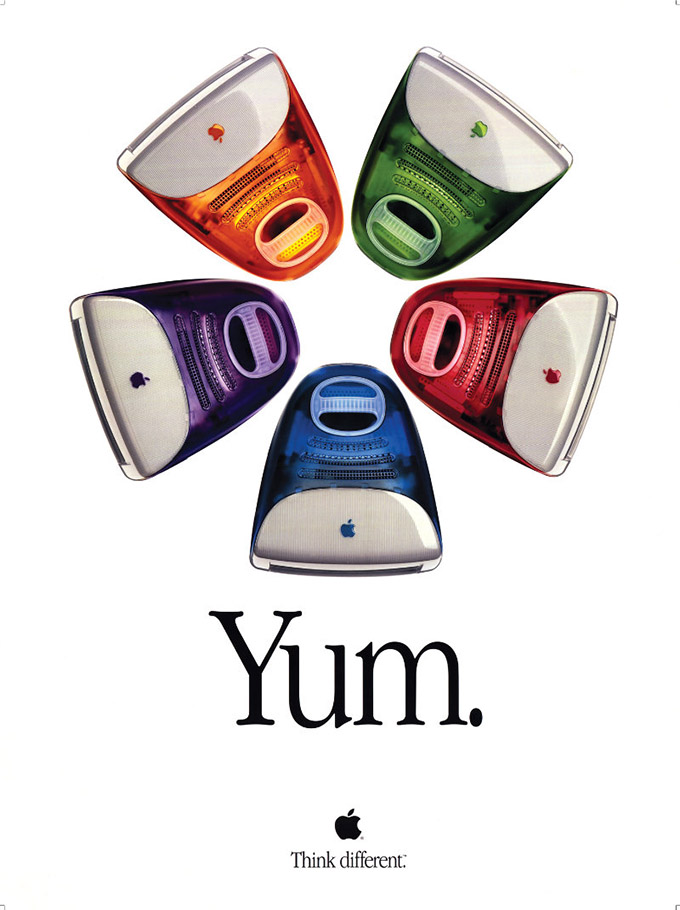 At the start of the decade, personal computers were big, lumbering boxes that were complicated to not only set up but use. Things would change with Bill Gates’ Microsoft, Steve Jobs’ Apple, and computer companies like Intel, Hewlett Packard, and others bringing about massive changes to simplify the learning and user experience. Microsoft’s Windows 95 had a huge impact globally, becoming the standard operating system for most systems, followed with continued success by Windows 98 three years later. Other innovations, like the computer mouse, improved internet capabilities, CD-ROM Drives, improved graphics and audio, and increased ease of use for setup and operation drove increased personal computer sales into 2000.
At the start of the decade, personal computers were big, lumbering boxes that were complicated to not only set up but use. Things would change with Bill Gates’ Microsoft, Steve Jobs’ Apple, and computer companies like Intel, Hewlett Packard, and others bringing about massive changes to simplify the learning and user experience. Microsoft’s Windows 95 had a huge impact globally, becoming the standard operating system for most systems, followed with continued success by Windows 98 three years later. Other innovations, like the computer mouse, improved internet capabilities, CD-ROM Drives, improved graphics and audio, and increased ease of use for setup and operation drove increased personal computer sales into 2000.
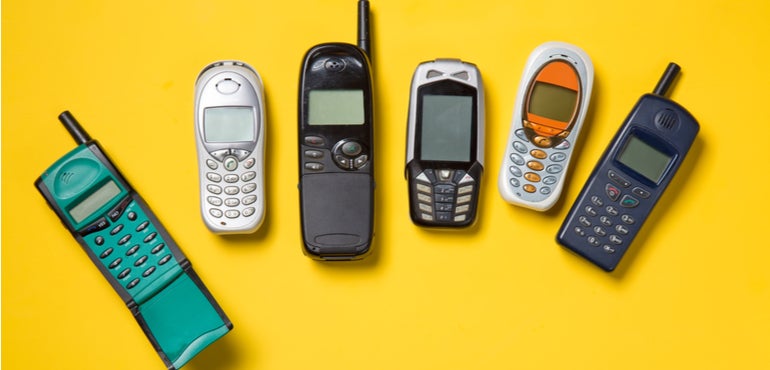 At the start of the 90s, there were three types of phones typically used in public. The landline (home phone), the car phone, and the mobile phone. Mobile phones were large, clunky, and awkward to use and less popular than car phones. However in the 90s, ‘second generation’ (2G) mobile phone systems emerged, leading to explosive mobile phone usage, as well as the advent of prepaid mobile phones.. Mobile phones moved away from larger brick phones to tiny 100-200 gram hand-held devices alongside technological improvements like advanced batteries and efficient electronics and higher density of cell-sites. SMS text-messaging was also born in 1992, and with the advent of prepaid services in the late 90s, texting became the communication method of choice among young teens. Although pagers were popular throughout the 90s, they were almost completely phased out by mobile phones by the early 2000s.
At the start of the 90s, there were three types of phones typically used in public. The landline (home phone), the car phone, and the mobile phone. Mobile phones were large, clunky, and awkward to use and less popular than car phones. However in the 90s, ‘second generation’ (2G) mobile phone systems emerged, leading to explosive mobile phone usage, as well as the advent of prepaid mobile phones.. Mobile phones moved away from larger brick phones to tiny 100-200 gram hand-held devices alongside technological improvements like advanced batteries and efficient electronics and higher density of cell-sites. SMS text-messaging was also born in 1992, and with the advent of prepaid services in the late 90s, texting became the communication method of choice among young teens. Although pagers were popular throughout the 90s, they were almost completely phased out by mobile phones by the early 2000s.
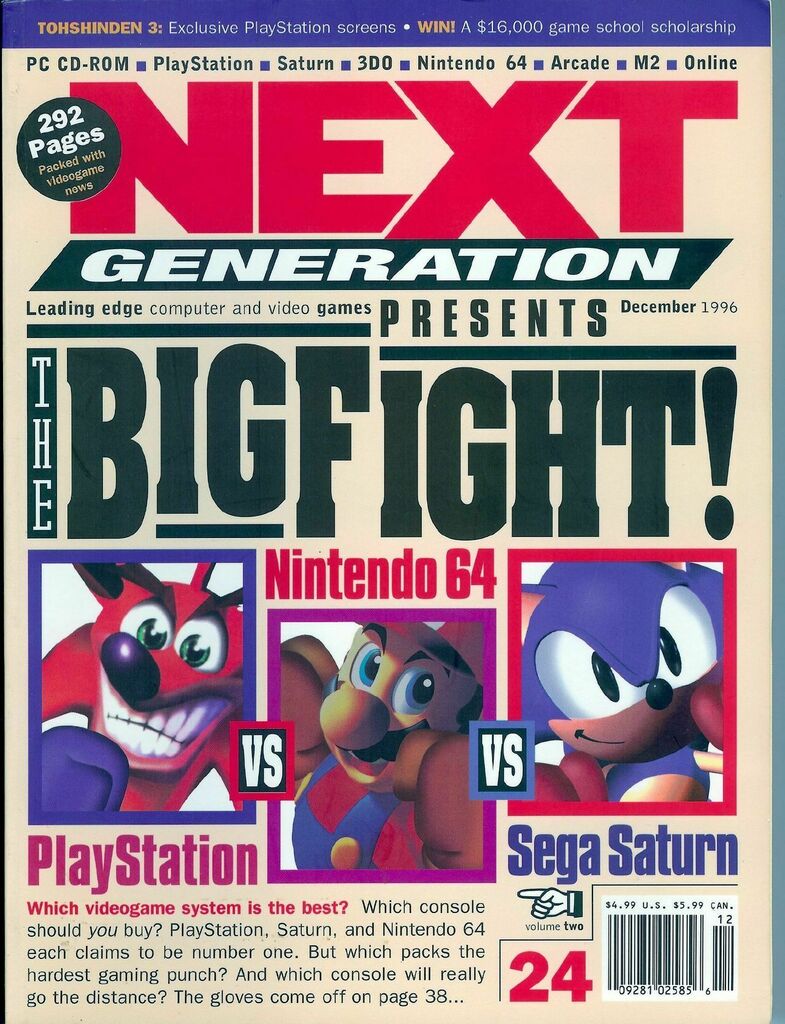 Avid gamers of the 90s would see consoles move from the fourth generation to the sixth generation. 2D sprite based graphics transitioned to 3D graphics and gave rise to several genres of video games, including first-person shooters, real-time strategy, and MMOs. Arcades were still relatively popular but declined as home consoles became popular. The rivalry between Sega and Nintendo continued into the 90s, but by 2000, the writing was on the wall for Sega. Sony’s break into the console market marked the 5th Generation, with the 1994 PlayStation, 1994 Sega Saturn, and the 1996 Nintendo 64 and the shift from cartridges to CDs. The sixth generation would open with the Dreamcast in 1999, though with middling sales and the introduction of the Playstation 2 in early 2000, Sega’s console market came to an end. In the handheld console market, Nintendo reigned supreme with the GameBoy and GameBoy Color selling tens of millions of units. PC gaming expanded alongside the growth of the internet, most interestingly with forays into online gaming, including the first MMOs like The Realm Online, Ultima Online, and Everquest.
Avid gamers of the 90s would see consoles move from the fourth generation to the sixth generation. 2D sprite based graphics transitioned to 3D graphics and gave rise to several genres of video games, including first-person shooters, real-time strategy, and MMOs. Arcades were still relatively popular but declined as home consoles became popular. The rivalry between Sega and Nintendo continued into the 90s, but by 2000, the writing was on the wall for Sega. Sony’s break into the console market marked the 5th Generation, with the 1994 PlayStation, 1994 Sega Saturn, and the 1996 Nintendo 64 and the shift from cartridges to CDs. The sixth generation would open with the Dreamcast in 1999, though with middling sales and the introduction of the Playstation 2 in early 2000, Sega’s console market came to an end. In the handheld console market, Nintendo reigned supreme with the GameBoy and GameBoy Color selling tens of millions of units. PC gaming expanded alongside the growth of the internet, most interestingly with forays into online gaming, including the first MMOs like The Realm Online, Ultima Online, and Everquest.
Many internet based startups, often called “dot-com” companies began with the creation of the World Wide Web. Companies like Amazon.com, eBay, Yahoo!, and Google launched, helping pave the way for e-commerce. Using credit or debit cards, customers could purchase goods and services from their computer and have many items delivered to their homes with little to no effort. Investors and the stock market went mad for many of these dot-com companies, despite many of these companies operating at a net loss and on a “growth over profits” business model, helping build the bubble. Though many companies hoped to build a solid customer base and move towards a profit driven business model, the market hung precariously on the edge. With concerns for the Y2K bug and practically worthless companies trading for hundreds per share, it was inevitable that the dot-com bubble would burst. The beginning of the end came in March 2000, and by the end of the year, most internet stocks had declined in value by 75%, wiping out $1.755 trillion in value. Companies like Pets.com, Webvan, eToys.com, and Go.com along with hundreds of others were shuttered or acquired by other companies.
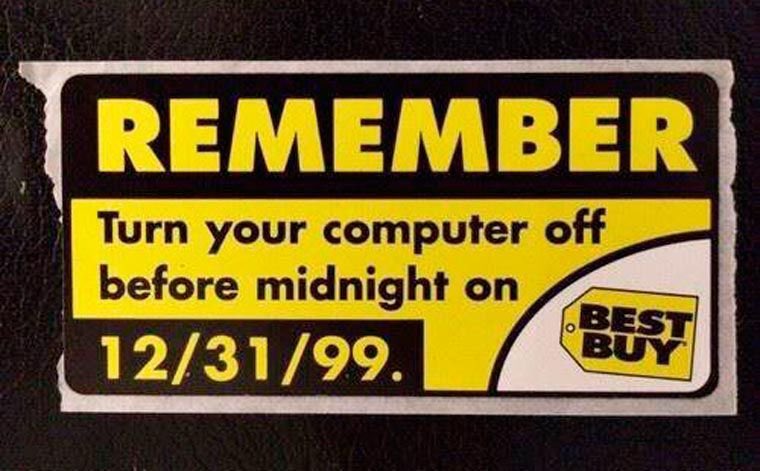 As the new millennium approached, fears began cropping up over potential computing errors and inability to distinguish 2000 from 1900. Experts argued this had the potential to damage or even bring down worldwide infrastructure and industries if left unchecked. Governments and the private sector began to work on future-proofing systems for the bug before long. As the public became aware of the ‘Y2K Scare’ and a lack of clarity on potential dangers of the bug, some ended up stocking up on food, water, firearms, and more in anticipation of the coming apocalypse. Thanks to international cooperation between government and private entities, only minor errors occurred as the 1999 rolled into 2000, though some critics asserted that the many of these fixes were unnecessary wastes of money. Regardless, the world did not end.
As the new millennium approached, fears began cropping up over potential computing errors and inability to distinguish 2000 from 1900. Experts argued this had the potential to damage or even bring down worldwide infrastructure and industries if left unchecked. Governments and the private sector began to work on future-proofing systems for the bug before long. As the public became aware of the ‘Y2K Scare’ and a lack of clarity on potential dangers of the bug, some ended up stocking up on food, water, firearms, and more in anticipation of the coming apocalypse. Thanks to international cooperation between government and private entities, only minor errors occurred as the 1999 rolled into 2000, though some critics asserted that the many of these fixes were unnecessary wastes of money. Regardless, the world did not end.
As the decade began, numerous advances in technology brought about what we now know as the Information Age with increasing access to smaller, more user friendly computers and the World Wide Web. The personal computer, invented in the late 70s, had by the 90s become affordable and more usable to the masses, and enabled rapid global communications and networking to shape society, and the ability to share and store information and data. By the 2000s, more than 50% of some Western countries had Internet access and more than 25% had cell phone access.




Many internet based startups, often called “dot-com” companies began with the creation of the World Wide Web. Companies like Amazon.com, eBay, Yahoo!, and Google launched, helping pave the way for e-commerce. Using credit or debit cards, customers could purchase goods and services from their computer and have many items delivered to their homes with little to no effort. Investors and the stock market went mad for many of these dot-com companies, despite many of these companies operating at a net loss and on a “growth over profits” business model, helping build the bubble. Though many companies hoped to build a solid customer base and move towards a profit driven business model, the market hung precariously on the edge. With concerns for the Y2K bug and practically worthless companies trading for hundreds per share, it was inevitable that the dot-com bubble would burst. The beginning of the end came in March 2000, and by the end of the year, most internet stocks had declined in value by 75%, wiping out $1.755 trillion in value. Companies like Pets.com, Webvan, eToys.com, and Go.com along with hundreds of others were shuttered or acquired by other companies.

Different items your character should be able to use will be listed from you should know how to use this to you might or probably do not know how to use this. Many of these items may depend on age or profession.[
- Television
- Landline Telephone/Mobile Phone
- Payphone
- Answering Machine
- Fax Machine
- Floppy Disks
- Cassette Tape Player/Walkman
- VCR/VHS Player and VHS Tapes
- CD Music Player/Discman
- DVD Players
- Stereo
- Record Player
- Electronic Word Processor
- Cameras
- Video Game Consoles
- Personal Computer and the World Wide Web
- Pagers
- Walkie-Talkies
- Personal Digital Assistant (PDA)
- SMS/Texting
- Camcorder
- GPS Device
Movies and Television in the 90s:
Moving out of the ‘80s, the ‘90s saw thousands of full-length films come to the big screen and home video. There was a movie for anyone and everyone to enjoy, regardless of genre or niche. New, young filmmakers joined veterans, bringing new ideas to an already strong film industry, including a slew of black film creators that brought the ghetto to film. Budgets ranged from as low as Blair Witch Project’s $60,000 to Titanic’s $200 million. Stars like Tom Hanks, Robert De Niro, Tom Cruise, Jodie Foster, Julie Roberts, and Meryl Streep amongst many others studded big name films alongside a slew of smaller but memorable stars.
Technology was a major part of film and television of the decade. Alongside audio and visual improvements, CGI and digital video made their debut, pushing special effects to new heights. 1995’s Toy Story was the first entirely computer-animated feature film, and Pixar’s debut, carving out a niche for them as king’s of computer animation and inspiration for other companies like Dreamworks. At home, VHS and VCRs gradually gave way to DVDs and DVD players, which featured sharper resolution, better quality, and interactive extras, rapidly surpassing VCRs and videotapes. This was reflected in the massive growth of direct-to-video film releases, assuaging the public’s hungry appetite for new media. This, along with the growth of the World Wide Web, had vast repercussions for the film industry.
Although the decade saw many great films and massive blockbusters, including Forrest Gump, Independence Day, Jurassic Park, and the Mummy, nothing could compare to James Cameron’s Titanic. A massive film who’s budget exceeded $200 million, it grossed nearly $2 billion dollars, eleven Oscars, and numerous other accolades. It was a must watch for everyone in 1997, and became a part of the cultural lexicon for years.
In the world of animation and family media, another giant stirred. For years, Disney languished with commendable, but safe animated films. Spurred by competition from Don Bluth and other companies, Disney’s Renaissance began in 1989 with The Little Mermaid and came into its own with 1991’s Beauty and the Beast, with each film of the decade garnering massive critical and commercial success for their music, visuals, and creativity and leaving a lasting impression on both the industry as a whole and their audiences.
Television of the eighties had largely been very safe and conservative, leaving many yearning for a form of TV that was more edgy or experimental. Many eighties films were built on fleshing out characters and understanding the dynamics behind human society, issues, and interaction, and this bled into many different genres of television in the nineties.
Sitcoms of the era benefited from more clever or snarky humor that didn’t insult the intelligence of their audiences, most encapsulated by shows like Seinfeld, Frasier or The Simpsons. Others focused on appealing to young adult audiences and their experiences, such as Friends, which went on to become one of, if not the most popular sitcom of the decade.
Talk shows underwent their own metamorphosis throughout the decade, with many of the old guard retiring in this era, giving way to familiar faces like Jay Leno or David Letterman or bringing in completely new faces, from Jerry Springer, Oprah, and Arsenio Hall. These shows had a profound effect on the American public, introducing new ideas and groups or discussing current events, such as when Bill Clinton went onto the Arsenio Hall Show and played his sax for the world to see, cementing himself as a popular candidate for the MTV Generation.
Cable television finally came to its own in the ‘90s, centering on strong, story and character driven stories that were “too adult for normal television” and the directing of a film. Although shows on normal networks were starting to edge more towards this direction, the freedom from censorship and appealing to ratings that weighed down creators helped bring about shows like The Larry Sanders Show, Oz, Sex and the City, and The Sopranos. Ultimately these shows and other programming on cable television would lead to the future of television.
Black television saw an explosion in popularity in the ‘90s, with shows like The Fresh Prince of Bel-Air, In Living Color, Moesha, and Martin, both appealing to black audiences and showing Americans across the country aspects of black culture and black issues that they may not otherwise see.
TV animation in the ‘90s largely focused on the children demographic, with Nickelodeon leading the pack with Rugratz, Ren and Stimpy, and Rocko’s Modern Life. These were shows that were able to appeal to children whilst having some nods to entertain the parents often watching with said children. By the end of the decade, Nickelodeon was joined by Disney and Cartoon Network, with offerings including Duck Tales, Gargoyles, Powerpuff Girls, Dexter’s Laboratory, and Johnny Bravo. Teens and young adults, however, flocked to MTV, which had moved away from purely music video related programming. Beavis & Butthead served as a primer for MTV, with crude and edgy humor that appealed to teens, and would pave the way for Aeon Flux, Daria, and more. And of course, there were adult animated sitcoms, ranging from Duckman, The Critic, South Park, King of the Hill, and at the tail end of the decade, Family Guy and Futurama.
Teens of the era were spoiled for choice when it came to television programming. Many teenager focused shows built what had been done with 1985’s The Breakfast Club, focusing on the teenagers, their problems and issues, and how they dealt with them. In shows like these, teens were people just like those that were watching, and dealt with issues they could relate with. Whether it was Beverly Hills 90210 (which appealed more to popular kids), My So-Called Life (appealed more to misfits and average kids), Freaks and Geeks (appealed to “losers” and outcasts), and Buffy the Vampire Slayer. Other shows like The Real World followed teens and young adults in their daily lives, and served as a way for people to talk and learn about sensitive issues and current events, including issues of race, abortion, and homosexuality.
Moving out of the ‘80s, the ‘90s saw thousands of full-length films come to the big screen and home video. There was a movie for anyone and everyone to enjoy, regardless of genre or niche. New, young filmmakers joined veterans, bringing new ideas to an already strong film industry, including a slew of black film creators that brought the ghetto to film. Budgets ranged from as low as Blair Witch Project’s $60,000 to Titanic’s $200 million. Stars like Tom Hanks, Robert De Niro, Tom Cruise, Jodie Foster, Julie Roberts, and Meryl Streep amongst many others studded big name films alongside a slew of smaller but memorable stars.
Technology was a major part of film and television of the decade. Alongside audio and visual improvements, CGI and digital video made their debut, pushing special effects to new heights. 1995’s Toy Story was the first entirely computer-animated feature film, and Pixar’s debut, carving out a niche for them as king’s of computer animation and inspiration for other companies like Dreamworks. At home, VHS and VCRs gradually gave way to DVDs and DVD players, which featured sharper resolution, better quality, and interactive extras, rapidly surpassing VCRs and videotapes. This was reflected in the massive growth of direct-to-video film releases, assuaging the public’s hungry appetite for new media. This, along with the growth of the World Wide Web, had vast repercussions for the film industry.
Although the decade saw many great films and massive blockbusters, including Forrest Gump, Independence Day, Jurassic Park, and the Mummy, nothing could compare to James Cameron’s Titanic. A massive film who’s budget exceeded $200 million, it grossed nearly $2 billion dollars, eleven Oscars, and numerous other accolades. It was a must watch for everyone in 1997, and became a part of the cultural lexicon for years.
In the world of animation and family media, another giant stirred. For years, Disney languished with commendable, but safe animated films. Spurred by competition from Don Bluth and other companies, Disney’s Renaissance began in 1989 with The Little Mermaid and came into its own with 1991’s Beauty and the Beast, with each film of the decade garnering massive critical and commercial success for their music, visuals, and creativity and leaving a lasting impression on both the industry as a whole and their audiences.
Television of the eighties had largely been very safe and conservative, leaving many yearning for a form of TV that was more edgy or experimental. Many eighties films were built on fleshing out characters and understanding the dynamics behind human society, issues, and interaction, and this bled into many different genres of television in the nineties.
Sitcoms of the era benefited from more clever or snarky humor that didn’t insult the intelligence of their audiences, most encapsulated by shows like Seinfeld, Frasier or The Simpsons. Others focused on appealing to young adult audiences and their experiences, such as Friends, which went on to become one of, if not the most popular sitcom of the decade.
Talk shows underwent their own metamorphosis throughout the decade, with many of the old guard retiring in this era, giving way to familiar faces like Jay Leno or David Letterman or bringing in completely new faces, from Jerry Springer, Oprah, and Arsenio Hall. These shows had a profound effect on the American public, introducing new ideas and groups or discussing current events, such as when Bill Clinton went onto the Arsenio Hall Show and played his sax for the world to see, cementing himself as a popular candidate for the MTV Generation.
Cable television finally came to its own in the ‘90s, centering on strong, story and character driven stories that were “too adult for normal television” and the directing of a film. Although shows on normal networks were starting to edge more towards this direction, the freedom from censorship and appealing to ratings that weighed down creators helped bring about shows like The Larry Sanders Show, Oz, Sex and the City, and The Sopranos. Ultimately these shows and other programming on cable television would lead to the future of television.
Black television saw an explosion in popularity in the ‘90s, with shows like The Fresh Prince of Bel-Air, In Living Color, Moesha, and Martin, both appealing to black audiences and showing Americans across the country aspects of black culture and black issues that they may not otherwise see.
TV animation in the ‘90s largely focused on the children demographic, with Nickelodeon leading the pack with Rugratz, Ren and Stimpy, and Rocko’s Modern Life. These were shows that were able to appeal to children whilst having some nods to entertain the parents often watching with said children. By the end of the decade, Nickelodeon was joined by Disney and Cartoon Network, with offerings including Duck Tales, Gargoyles, Powerpuff Girls, Dexter’s Laboratory, and Johnny Bravo. Teens and young adults, however, flocked to MTV, which had moved away from purely music video related programming. Beavis & Butthead served as a primer for MTV, with crude and edgy humor that appealed to teens, and would pave the way for Aeon Flux, Daria, and more. And of course, there were adult animated sitcoms, ranging from Duckman, The Critic, South Park, King of the Hill, and at the tail end of the decade, Family Guy and Futurama.
Teens of the era were spoiled for choice when it came to television programming. Many teenager focused shows built what had been done with 1985’s The Breakfast Club, focusing on the teenagers, their problems and issues, and how they dealt with them. In shows like these, teens were people just like those that were watching, and dealt with issues they could relate with. Whether it was Beverly Hills 90210 (which appealed more to popular kids), My So-Called Life (appealed more to misfits and average kids), Freaks and Geeks (appealed to “losers” and outcasts), and Buffy the Vampire Slayer. Other shows like The Real World followed teens and young adults in their daily lives, and served as a way for people to talk and learn about sensitive issues and current events, including issues of race, abortion, and homosexuality.
- Home Alone (1990)
- Ghost (1990)
- Dances with Wolves (1990)
- Pretty Woman (1990)
- The Hunt for Red October (1990)
- Terminator 2: Judgment Day (1991)
- Beauty and the Beast (1991)
- Silence of the Lambs (1991)
- Boyz n the Hood (1991)
- Thelma & Louise (1991)
- Point Break (1991)
- Aladdin (1992)
- Basic Instinct (1992)
- Home Alone 2: Lost in New York (1992)
- A Few Good Men (1992)
- Sister Act (1992)
- Wayne’s World (1992)
- Jurassic Park (1993)
- Mrs. Doubtfire (1993)
- The Fugitive (1993)
- Schindler’s List (1993)
- Groundhog Day (1993)
- Falling Down (1993)
- The Lion King (1994)
- Forrest Gump (1994)
- True Lies (1994)
- The Mask (1994)
- Speed (1994)
- Pulp Fiction (1994)
- Toy Story (1995)
- Apollo 13 (1995)
- Pocahontas (1995)
- Se7en (1995)
- Jumanji (1995)
- Braveheart (1995)
- Clueless (1995)
- Heat (1995)
- Independence Day (1996)
- Twister (1996)
- Mission Impossible (1996)
- Jerry Maguire (1996)
- Scream (1996)
- Romeo + Juliet (1996)
- Titanic (1997) (Basically everyone watched this, major cultural touchstone)
- The Lost World: Jurassic Park (1997)
- Men in Black (1997)
- Good Will Hunting (1997)
- Face/Off (1997)
- Hercules (1997)
- Starship Troopers (1997)
- Armageddon (1998)
- Saving Private Ryan (1998)
- Godzilla (1998)
- There’s Something About Mary (1998)
- A Bug’s Life (1998)
- Mulan (1998)
- The Prince of Egypt (1998)
- Star Wars: Episode I - The Phantom Menace (1999)
- The Sixth Sense (1999)
- Toy Story 2 (1999)
- The Matrix (1999)
- Tarzan (1999)
- The Mummy (1999)
- Notting Hill (1999)
- American Beauty (1999)
- Gladiator (2000)
- The Perfect Storm (2000)
- What Lies Beneath (2000)
- Saturday Night Live (1975 - Present) (Sketch Comedy/Political Satire/Variety Show)
- Full House (1987 - 1995) (Sitcom)
- Murphy Brown (1988 - 1998) (sitcom drama)
- Seinfeld (1989 - 1998) (Sitcom)
- The Simpsons (1989 - Present) (Animated sitcom)
- Family Matters (1989 - 1998) (Sitcom)
- In Living Color (1990 - 1994) (Sketch Comedy)
- Twin Peaks (1990 - 1991) (Mystery Drama)
- Fresh Prince of Bel-Air (1990 - 1996) (Sitcom)
- Beverly Hills 90210 (1990 - 2000) (Teen Drama)
- Blossom (1990 - 1995) (Teen sitcom)
- Law & Order (1990 - 2010) (Legal Drama)
- Doug (1991 - 1999) (Animated sitcom)
- Rugratz (1991 - 2004) (Animated sitcom)
- Melrose Place (1992 - 1999) (Soap Opera)
- The Real World (1992 - Present)
- The Larry Sanders Show (1992 - 1998) (Satire/Talk Show Comedy)
- Martin (1992 - 1997) (Sitcom)
- Late Night w/ Conan O’Brien (1993-2009) (Talk Show)
- Homicide: Life on the Street (1993 - 1999) (Police Drama)
- Beavis and Butt-Head (1993 - 1997) (Animated series)
- NYPD Blue (1993 - 2005) (Police Drama)
- Boy Meets World (1993 - 2000) (sitcom)
- X-Files (1993 - 2002) (Drama)
- Frasier (1993 - 2004) (Sitcom)
- Ellen (1994 - 1998) (Sitcom)
- ER (1994 - 2009) (Hospital Drama)
- My So-Called Life (1994 - 1995) (Teen Drama)
- Friends (1994 - 2004) (Sitcom)
- Mr. Show w/ Bob and David (1995 - 1998) (Sketch Comedy)
- Spin City (1996 - 2002) (Sitcom)
- Everybody Loves Raymond (1996 - 2005) (Sitcom)
- Stargate SG-1 (1997 - 2007) (Sci-Fi)
- Oz (1997 - 2003) (HBO Drama)
- Daria (1997 - 2002) (Animated sitcom)
- King of the Hill (1997 - 2010) (Animated Sitcom)
- Buffy the Vampire Slayer (1997 - 2003) (Teen drama)
- South Park (1997 - Present) (Animated comedy)
- Dawson’s Creek (1998 - 2003) (Teen Drama)
- Will & Grace (1998 - 2006) (Gay sitcom)
- Sex and the City (1998 - 2004) (Sitcom)
- Freaks and Geeks (1999 - 2000) (Teen Drama)
- The Sopranos (1999 - 2007) (Crime Drama)
Trends and Fads of the Era: As with any decade, crazes, fads, and trends were abound. It was a strange and exciting decade with big developments and silly fads. Although many of these are targeted towards children and teens, many of these trends also hit adults.
- Single Parent Households - As the 80s moved into the 90s, Generation X was the first era where having divorced parents was relatively normal. Single-parent households went against the grain of the nuclear family America still touted, and the struggles between parents and children had lasting effects on the child’s development. Because of this, GenXers are more likely to stay married than their parents’ generation.
- Blockbuster - Still the mainstay for VHS, Blockbuster expanded to DVDs and in some places video games in the 90s. If you wanted to rent a movie out, Blockbuster was the place to go.
- Michael Jordan - Bringing the Chicago Bulls victory for six seasons doesn’t happen without becoming a cultural legend on top of a basketball legend. His deals with Gatorade, Hanes, McDonald’s, and Nike made sure everyone knew who he was. Space Jam was just the icing on the cake.
- Wassaaaaaap - December 1999 saw Budweiser’s “Wassap” commercials debut, which would air for years and become a cultural trend to reference in the early 2000s.
- Cool Britannia - A period of increased pride in UK culture that spanned the 90s. It would affect music, fashion, and other aspects of culture both in the UK itself and in the US and Canada.
- O.J. Simpson Chase and Trial - Whether it was at home or on a public television set, everyone was glued to the O.J. Simpson case. Coverage of the trial was essentially a soap opera, helping keep viewers focused on every development with the case. Opinions on Simpson were largely divisive, often on racial lines, and there were both supporters and detractors on the jury’s ‘Not Guilty’ decision. The final verdict was viewed by 150 million people.
- Fanny Packs - Intended for both men and women and worn from the front and side, sometimes on the back. Carry all your useful tech like CD/MP3 Players, PDAs, and mobile phones.
- Grunge Fashion - Most popular early in the decade, clothes like these faded from popular fashion by 1996 for most.
- Sagging Pants - Inspired by some hip-hop artists and rappers, saggers would wear their pants down and expose their underwear and their ass. Somehow this trend survived into the 2000s in some fashion.
- Mom Jeans - In contrast to sagging pants, High-waisted women’s jeans became popular with middle-aged women thanks to cameos in Friends and Beverly Hills 90210. They were comfortable and featured a high waist cut above the belly button with extra space at the legs and crotch.
- Starter Jackets and Caps - Starter is an American clothing manufacturer that focuses on major league sports teams. During the 90s they produced licensed jackets and caps of these sports leagues, becoming iconic and status symbols of the era. Although the company declined by the end of the decade, the jackets still held cultural cachet.
- Overalls/Dungarees - Alongside flannels and baggy pants, overalls were a popular fashion trend of the 90s. Hip hop artists and celebrities often wore it with only one strap buckled, or just a belt holding them up. Others paired it with a crop top, showing midriff from the sides.
- Body Glitter - Regardless of age, splashing some glitter on yourself before a night on the town or heading into school was sure to turn some heads. Just don’t get any in your hair unless you’re willing to have it sparkle for a few weeks.
- Rachel Haircut - After Friends debuted in 1994, it quickly skyrocketed in ratings and viewership. The Rachel Haircut was one of several trends spawned by the show. Everyone wanted to look like Rachel, Jennifer Anniston’s character, and by the mid-90s, millions of women sported a variation of her haircut.
- Bleached Hair/Tips - Bleached hair was popular, especially amongst guys in the late 90s. Applying blond hair dye or peroxide to the hair was relatively common and continued into the early 2000s, inspired by celebrities on shows like Jersey Shore and bands like NSync.
- Popular Name Brands: FUBU, Starter Jackets and Hats, Nike Air Jordans Sneakers, Coogi Sweaters, Kangol Bucket Hats and Caps, Champion Clothing, Avirex Jackets,
- Oxygen Bars - In the late 90s, the ‘Oxygen Bar’ fad swept the US and Canada. Customers could choose an oxygen flavor (scent) and enjoy the “healing benefits of oxygen” for .50 cents to a dollar. Oxygen theory proponents claimed increased oxygen could clean toxins from the body, improve health, relieve stress, and more. This short lived fad was still popular with some celebrities, who had their own personal oxygen machines.
- Napster - If you were with it in 1999, you knew about Napster, a hot software that allowed easy peer-to-peer file sharing. It grew to 10 million users in under a year, most popularly used to share songs. However, spyware, malware, and viruses were a common issue with it. Furthermore, it pissed off the music industry, incurring a slew of lawsuits starting in March 2000, increasing its user base even further as people scrambled to use the software before it got banned.
- Hollywood - The 90s lay claim to the highest grossing and biggest films of the century. Hype specifically around 1997’s Titanic and 1999’s Star Wars: Episode 1 - The Phantom Menace was astronomical. The decade saw instant classics like The Matrix, Clueless, Pulp Fiction, Jurassic Park, and Forrest Gump
- 24/7 News Cycle and Scandal - Following the acquisition of the ABC, NBC, and CBS by profit based companies, the news became more and more profit based, and one of the most common ways to draw viewership was by covering large scandals like the O.J. Simpson trial and the Clinton-Lewinsky proceedings. Companies like CNN saw massive ratings and viewership boosts for their coverage of these incidents, and they helped propel the media towards focusing on stories that would bring in the most viewers. Other companies like FOX News and MSNBC were born.
- Pokemon - As one of Nintendo’s flagships on the GameBoy and GameBoy Color, Pokemon grew into a craze across America, with trading cards, toys, an anime, manga, and numerous clothing products, often sporting the popular Pikachu.
- Mighty Morphin Power Rangers - A Television Series brought over to the US by Fox, the Power Rangers became a pop culture phenomenon in the 90s amongst children, spawning a large line of toys, actions figures and other paraphernalia.
- Teen Dramas - Although nothing new, teen dramas in the 90s portrayed teens as complex, thinking individuals with problems of their own, and youth of the period had the opportunity to finally see themselves reflected in these shows. While Beverly Hills 90210 appealed to the popular kids, shows like My So-Called Life and Degrassi High appealed to less popular kids.
- Macarena - The Los Del Rio song “La Macarena” and its associated dance were inescapable in the 90s. Love it or hate it, almost everyone knew the dance. Into the 2000s you could still expect people to jump to their feet and “do the Macarena”.
- The Carlton - The Fresh Prince of Bel-Air was one of the most popular TV sitcoms of the 90s. Carlton Banks, played by Alfonso Ribeiro, was forever remembered for his iconic nerdy dance, the Carlton, which came up frequently in the show.
- Boy Bands - If it’s not grunge, rock, or hip hop, you were probably a fan of pop, and nothing was bigger in pop by the late 90s than boy bands. Highly commercialized and marketed towards teens, there were dozens of these groups by 2000. Popular boy bands included Backstreet Boys, NSync, New Edition, 98 Degrees, and New Kids on the Block
- Girl Groups - 90s Pop weren’t limited to boy bands. Girl groups including TLC and Destiny’s Child got in on the same trend. The queens of the fad were without a doubt the Spice Girls, made up of Melanie Brown, Melanie Chisholm, Emma Bunton, Geri Halliwell, and Victoria Beckham, dominating charts throughout the decade. Everyone had a favorite spice girl, and the group put out hit after hit, including “Wannabe”
- Beanie Babies - In the 90s, one of the hottest collectable toys were beanie babies. Ty Inc. built demand for these stuffed animals by limiting supply and discontinuing popular products. Limited supply and high demand created fan clubs, websites, and collectors.
- Troll Dolls - Trolls were little plastic toys with a variety of colored strands of hair. The trolls craze was similar to that of the Beanie Babies, with collectors and fan groups and sites built around the toys.
- POGs - Also known as Milk Caps, POGs were huge in the 80s and 90s, with everyone having a few of them. However by the end of the decade, the fad had crashed and several manufacturers of Pogs went out of business.
- Tickle Me Elmo - A popular show based on the titular character from Sesame Street, Elmo would giggle when tickled and say the catchphrase “Oh boy, that tickles!”. It was one of the most popular holiday season toys during the 90s.
- Tamagotchis/Giga Pets - Digital pets that had to be fed, watered, and cared for were popular by the late 90s.
- Furbies - Furby, the robotic owl-hamster toy, debuted in 1998, quickly growing to popularity and was the hottest toy in 1999 with 14 million sales that year alone. The appeal of Furbies was that they could learn some English words, entertaining children for a little while.
- Card Games - Whether it be Magic: The Gathering, Pokemon, Yu-Gi-Oh!, or Digimon, kids obsessed over card games, building decks, and duking it out in the school yards of the late 90s.
Last edited:
